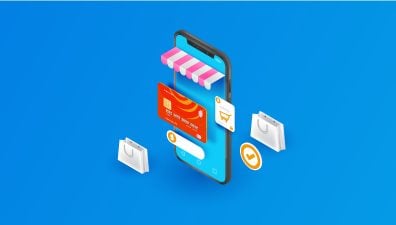Omnichannel customer service is a strategic approach that allows businesses to meet customers wherever they are by integrating various service channels into one seamless experience. Unlike multichannel service, where interactions occur independently on each channel, omnichannel customer service is about creating a unified journey. Each touchpoint—from social media to in-store assistance—is connected, ensuring that customers receive consistent support, information, and branding regardless of how they choose to engage. This approach empowers customers, making their interactions smoother and more satisfying, as they can effortlessly move between channels without losing context or having to repeat information.
As customer service has evolved in the digital age, so too have customer expectations. In an environment filled with more choices than ever, consumers demand the convenience of switching channels—starting a chat online, picking up where they left off through an app, and even completing interactions in-store. Omnichannel customer service examples illustrate how leading brands are adapting to this shift, showcasing the value of a cohesive experience that spans all touchpoints.
Table of Contents
- The Key Elements of Effective Omnichannel Customer Service
- Optimizing Omnichannel Customer Service Pre-Sales
- Enhancing Customer Service During Sales Through Omnichannel Strategies
- Delivering Top-Notch Omnichannel Customer Service Post-Sales
- Key Technologies for Omnichannel Customer Service
- Measuring the Success of Omnichannel Customer Service
The Key Elements of Effective Omnichannel Customer Service
Creating a truly effective omnichannel customer service experience is about more than simply being available on multiple platforms; it’s about harmonizing these channels to build a cohesive journey that feels natural and uninterrupted for customers. In successful omnichannel customer service examples, businesses showcase how this unified approach strengthens customer satisfaction, loyalty, and engagement. To achieve such seamless integration, several foundational elements come into play. These core components work together to create an experience where customers move effortlessly between touchpoints, always receiving consistent information, support, and brand messaging.
The Foundations of Omnichannel Customer Service
The foundation of effective omnichannel customer service lies in delivering a connected, consistent, and personalized experience across every touchpoint. By aligning channels like in-store, online, mobile apps, and social media, businesses can ensure that each interaction a customer has with their brand reinforces their overall journey, enhancing satisfaction and building trust. Here are some essential foundations highlighted in omnichannel customer service examples from leading brands.
Creating Consistent Messaging and Branding Across Channels
For customers to feel at home with a brand no matter where they engage, it’s vital that each channel speaks the same language—both in tone and in content. Consistency in messaging not only reinforces brand identity but also eliminates confusion for customers. Omnichannel customer service examples often show that whether customers are browsing a brand’s website, following them on social media, or visiting a physical store, they encounter the same messages, values, and tone. This alignment helps strengthen the brand’s image and ensures that customers know what to expect, building confidence and trust.

For instance, a brand promoting a seasonal sale on social media should also have this information reflected on its website, mobile app, and in-store displays. By mirroring promotions and information across channels, businesses create a seamless experience that allows customers to interact with their preferred channel without missing important updates. The best omnichannel customer service examples reveal that effective, consistent messaging requires strong cross-departmental collaboration, where marketing, customer service, and sales teams coordinate to keep content aligned and relevant across platforms.
Providing a Unified Experience: Connecting In-Store, Online, Mobile Apps, Social Media, and More
Omnichannel customer service isn’t just about offering multiple ways to reach a brand; it’s about connecting those ways into a single, fluid experience. When a customer starts a conversation with a chatbot on a website and finishes it with a representative in-store, or begins browsing on an app and completes a purchase in-store, each channel must work in harmony. Leading omnichannel customer service examples highlight the power of integration between digital and physical spaces to enhance customer satisfaction and reduce friction.
To enable this unified experience, brands often rely on integrated technology solutions. Cloud-based platforms and customer relationship management (CRM) systems help synchronize customer data across channels so that customers are instantly recognized and understood, regardless of the channel they’re using. This interconnectedness allows for smooth transitions from one channel to another without customers needing to repeat themselves or re-establish their preferences. Omnichannel customer service examples, such as those from major retailers, show how a unified experience can support convenient services like click-and-collect (buying online, picking up in-store), allowing brands to meet customers where they are.
Personalization and the Customer Journey: The Need for Real-Time Data Synchronization
Personalization is a cornerstone of any effective omnichannel strategy. Customers today expect experiences that reflect their unique preferences, past purchases, and browsing history, all in real-time. Omnichannel customer service examples emphasize that delivering personalized service requires more than just collecting customer data; it involves integrating that data across all channels so every touchpoint has a complete, up-to-date view of each customer.

This level of personalization is achieved through real-time data synchronization, where information about a customer’s interactions, preferences, and purchase history is constantly updated across all channels. When a customer searches for a product online, adds it to their cart, and then decides to check out in-store, omnichannel customer service examples demonstrate how real-time data allows the brand to recognize the customer’s intent and provide a tailored experience accordingly. Brands that excel in personalization use this synchronized data to suggest related products, offer personalized discounts, and remember customer preferences, fostering deeper relationships with customers.
Moreover, real-time data synchronization enhances responsiveness. If a customer has previously raised a question through email or social media, omnichannel customer service examples show that a representative on another platform—such as in-store or on a help desk—can access that history and continue the conversation seamlessly. This immediate understanding of each customer’s journey ensures that customer support is timely, relevant, and empathetic, significantly enhancing the customer experience.
Essential Touchpoints in Omnichannel Customer Service
For omnichannel customer service to be successful, every touchpoint must be intentionally designed to meet customer needs and expectations. Omnichannel customer service examples reveal that brands can create a consistent, high-quality experience by integrating each touchpoint with the others, creating a unified journey across platforms.
Website/Online Store: Offering Live Chat, FAQs, and Contact Forms
The website or online store is often the first place customers interact with a brand, making it a critical touchpoint in omnichannel customer service. Effective omnichannel customer service examples show that websites serve as comprehensive hubs where customers can browse products, find information, and reach support when needed. A well-designed website incorporates a variety of tools to make customer interactions as efficient as possible.

- Live Chat: Real-time assistance through live chat allows customers to get immediate answers to questions, whether they are browsing products or encountering technical issues. It offers direct, instant support, reducing the need for customers to switch channels. Live chat also helps capture customer information that can be transferred seamlessly to other channels.
- FAQs and Contact Forms: An effective website includes an FAQ section that addresses common queries, providing quick, accessible answers that reduce dependency on live support. Contact forms allow customers to reach out for help on their own terms, enabling a convenient, asynchronous form of communication. These tools enable customers to resolve basic questions independently, providing a level of convenience that’s essential for an integrated experience.
Mobile App: Push Notifications, In-App Messaging, and Mobile Customer Support
In today’s mobile-centric world, a well-designed mobile app is indispensable for providing omnichannel customer service. Many omnichannel customer service examples highlight the mobile app as a bridge between digital and physical channels, allowing customers to engage with the brand while on the go. Apps enable brands to provide timely updates, personalized support, and interactive features that make customer interactions more engaging and responsive.

- Push Notifications: Push notifications keep customers informed in real-time, whether it’s about an order update, new product arrivals, or personalized offers. By sending notifications tailored to the customer’s preferences and purchase history, brands can encourage engagement and make the app experience feel personal. Omnichannel customer service examples reveal that brands using push notifications strategically can keep customers engaged and informed, helping to strengthen loyalty.
- In-App Messaging and Customer Support: In-app messaging provides customers with a direct line to support while they’re using the app, offering assistance right when they need it. This feature allows customers to get answers without leaving the app, reducing friction and providing a more seamless experience. Omnichannel customer service examples show that brands using in-app support can meet customer needs faster and with greater relevance, as agents have access to the customer’s app interactions and purchase history.
Social Media: Engaging with Customers on Platforms like Facebook, Twitter, and Instagram
Social media platforms have become essential touchpoints for brands looking to engage customers and address their needs quickly and publicly. Omnichannel customer service examples underscore that social media is both a marketing tool and a support channel, allowing brands to engage customers where they already spend time. On platforms like Facebook, Twitter, and Instagram, customers can ask questions, share feedback, and resolve issues, making social media a dynamic part of the omnichannel experience.

- Customer Engagement and Brand Interaction: Social media offers brands a unique opportunity to interact with customers in real time, fostering a more personal connection. Brands can use these platforms to answer questions, address complaints, and provide helpful information. Omnichannel customer service examples reveal that responding promptly and effectively on social media enhances brand perception, showing customers that the brand is accessible, attentive, and engaged.
- Direct Messages and Comments: Many brands provide customer service through both direct messages and comments on social media, allowing customers to choose the communication style they prefer. Direct messages offer a private way for customers to receive assistance, while responding to comments publicly demonstrates transparency and responsiveness. By offering multiple ways to engage on social media, brands enhance the customer experience, as demonstrated by effective omnichannel customer service examples.
In-Store Support: How In-Person Support Complements Online Efforts
In-store support remains a crucial part of omnichannel customer service, bridging the gap between digital and physical interactions. Many omnichannel customer service examples highlight how brands integrate in-store support with online services to create a unified experience. Customers may browse products online and visit a store for a hands-on experience, or they may purchase online and choose in-store pickup. In each case, in-store support complements digital efforts by offering personalized assistance and further reinforcing the brand’s commitment to customer satisfaction.

- Assisted Checkout and Product Assistance: In-store associates are often equipped with mobile devices that allow them to access online inventory, check order status, and assist with product information. This level of support reflects a brand’s digital offerings and helps create a cohesive experience. Omnichannel customer service examples demonstrate that empowered in-store staff can bridge the digital-physical divide, offering a higher level of convenience and support for customers.
- Integration with Online and App Experiences: In-store support is often integrated with online and app experiences through features like buy online, pick up in-store (BOPIS) and online returns in-store. These options allow customers to shop flexibly, combining the convenience of online browsing with the immediacy of in-store service. By aligning in-store and digital experiences, brands create a fluid, convenient journey that accommodates customer preferences, as evidenced by many successful omnichannel customer service examples.
Email and Phone Support: Maintaining Consistency Across All Channels
Email and phone support are foundational channels that remain highly relevant in omnichannel customer service. Despite the rise of digital channels, email and phone support offer the accessibility and direct interaction that many customers still prefer. Omnichannel customer service examples illustrate that when email and phone support are well-coordinated with digital channels, they help maintain consistency and continuity in customer interactions.
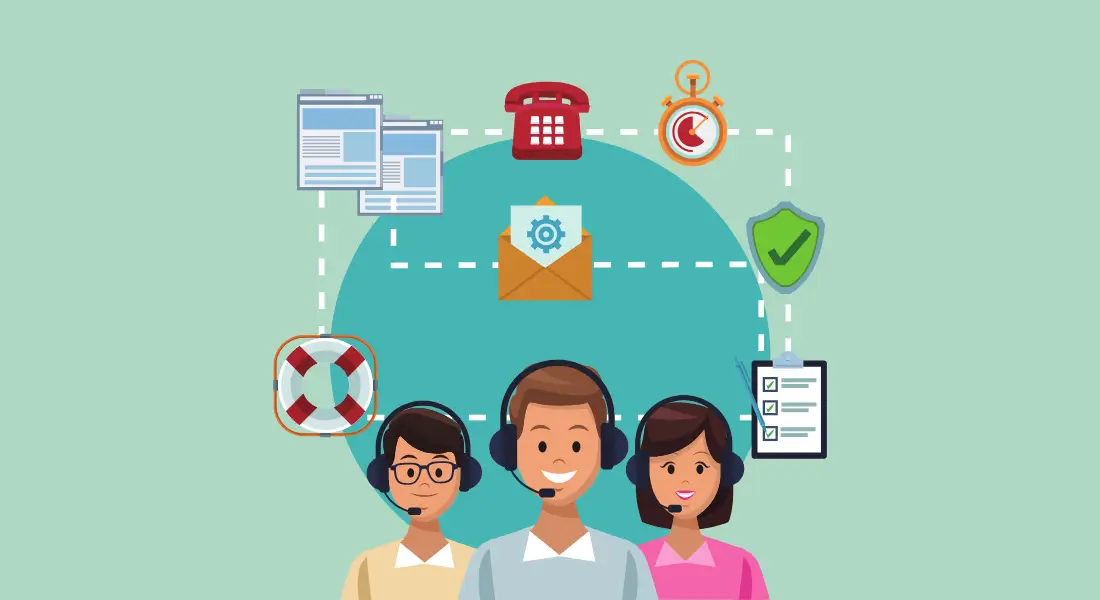
- Email Support for Detailed Assistance: Email support is ideal for complex inquiries that require in-depth responses, allowing customers to explain issues thoroughly. By integrating email with other channels, brands can create a seamless experience where customer information is shared across platforms. Omnichannel customer service examples reveal that by responding to emails with context on previous interactions (from in-store, app, or website), brands can demonstrate a comprehensive understanding of each customer’s journey.
- Phone Support for Immediate Resolution: Phone support remains a critical option for customers seeking immediate, human assistance. Effective omnichannel customer service examples show that phone support can be enhanced by synchronizing data from previous interactions, giving agents a complete view of the customer’s history. This integration allows phone representatives to provide contextually relevant service, reducing frustration and improving the overall experience.
Each of these touchpoints—whether digital or physical—plays a vital role in effective omnichannel customer service. By designing each channel to complement the others and ensuring consistent information, brands can create an interconnected journey that meets customer expectations. Omnichannel customer service examples consistently show that successful brands are those that integrate these essential touchpoints into a cohesive experience, strengthening customer satisfaction and building lasting loyalty.
Optimizing Omnichannel Customer Service Pre-Sales
The pre-sales phase is a critical point in the customer journey, often influencing whether a potential customer will move forward with a purchase. Effective omnichannel customer service examples highlight how brands that focus on understanding and meeting pre-sales needs can build trust, provide essential support, and ultimately improve conversion rates. By offering seamless, consistent pre-sales support across various channels, businesses can connect with customers early, guiding them through the decision-making process and reducing any barriers that might deter them from purchasing.
Understanding Pre-Sales Customer Needs
Understanding what potential customers need during the pre-sales phase is essential to developing an omnichannel service strategy that resonates and engages. Omnichannel customer service examples consistently show that brands that excel in the pre-sales phase are those that invest time and resources into understanding and addressing customer questions, concerns, and needs before they even make a purchase. Here’s how understanding these pre-sales needs can greatly influence the buying decision.
How Pre-Sales Service Influences the Buying Decision
During the pre-sales phase, potential customers are often in the process of researching and comparing products, evaluating brands, and looking for assurance that their needs will be met. It’s a stage of consideration, where customers seek answers to questions about product features, value, and suitability for their specific requirements. Omnichannel customer service examples show that the right pre-sales service can serve as a persuasive tool, guiding customers through their decision-making journey and increasing the likelihood of conversion.
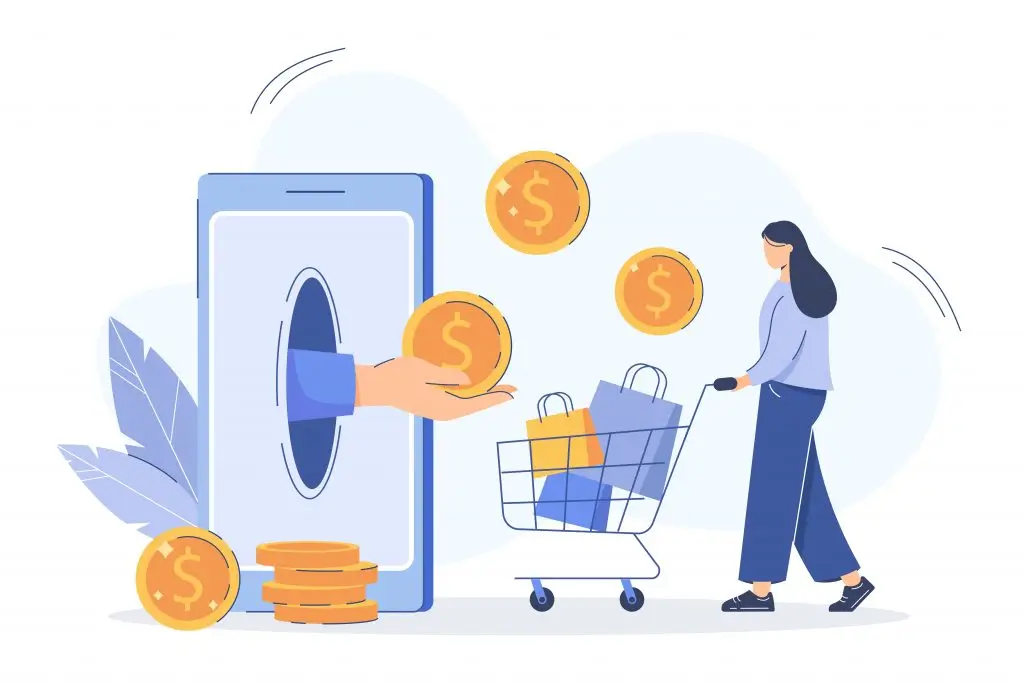
- Building Trust and Credibility: Pre-sales service plays a significant role in establishing trust. Customers are more likely to buy from a brand that demonstrates a proactive approach to meeting their needs. Omnichannel customer service examples reveal that customers often look for brands that offer immediate support across various touchpoints, such as live chat on the website, instant responses on social media, and dedicated phone support. By making information accessible and easy to obtain, brands can reassure customers, enhancing their credibility and making them more likely to make a purchase.
- Reducing Customer Hesitations: Often, potential buyers have specific concerns or questions that, if left unanswered, can become barriers to purchase. Addressing these questions quickly and effectively is crucial for moving customers closer to a decision. Omnichannel customer service examples demonstrate that brands that use real-time chat, informative product videos, detailed FAQs, and responsive social media messaging can help clear up doubts. By providing the right information at the right time, businesses make the path to purchase smoother and more appealing.
- Providing an Educated Buying Experience: Another key way that pre-sales service can influence buying decisions is by educating potential customers. Omnichannel customer service examples illustrate how brands use personalized product recommendations, comprehensive product guides, and interactive content to inform customers about product benefits, comparisons, and potential uses. By educating customers on their options, brands empower them to make confident purchasing decisions, which not only aids conversion but also reduces the likelihood of returns or dissatisfaction post-purchase.
Identifying Customer Pain Points Before Purchase
Identifying and addressing common pain points before purchase is crucial in the pre-sales phase. Omnichannel customer service examples show that successful brands invest in understanding the factors that cause hesitation or frustration, ensuring that customers feel supported and understood before they make a buying decision. Recognizing these pain points early allows companies to tailor their omnichannel service approach to minimize barriers and enhance the customer experience.

- Price Sensitivity and Budget Constraints: For many customers, price is a significant factor in the buying decision. Potential buyers often hesitate due to concerns about pricing or value for money. Omnichannel customer service examples reveal that brands addressing price sensitivity can ease these concerns by offering transparent pricing information, highlighting promotions, and using online chatbots to suggest budget-friendly options. Some brands even integrate automated discount codes or loyalty offers during the pre-sales phase, providing a gentle nudge toward purchase.
- Product Information Gaps: Another common pain point is a lack of comprehensive product information. Customers who are unable to find detailed product descriptions, specifications, or usage instructions may feel uncertain about purchasing. Omnichannel customer service examples from top brands show that offering access to extensive product information—such as reviews, FAQs, detailed photos, and comparison tools—across all channels helps customers make informed choices. By integrating this information on websites, mobile apps, and even in-store kiosks, brands can ensure that customers have all the details they need to make a confident purchase.
- Concerns About Fit and Suitability: Particularly for categories like clothing, electronics, or furniture, customers may worry about whether a product will fit their needs or preferences. Omnichannel customer service examples show that brands effectively address this concern by offering virtual try-ons, product demos, and size guides. By implementing solutions like augmented reality in mobile apps or personalized recommendations based on customer preferences, brands can help potential buyers visualize the product’s fit or use, reducing uncertainty.
- Delivery Times and Return Policies: Uncertainty around delivery times, shipping costs, and return policies can also act as deterrents during the pre-sales phase. Omnichannel customer service examples highlight that brands successfully overcoming this pain point provide clear, accessible information about delivery and returns across all channels. Providing this information through live chat, email confirmations, and easy-to-navigate website pages reassures customers, showing transparency and making them more comfortable with the potential purchase.
- Customer Service Accessibility: Customers often feel more secure in their buying decisions when they know that assistance is readily available. A common pre-sales pain point is the feeling of not knowing where to go for quick answers. Omnichannel customer service examples show that brands offering round-the-clock support via multiple channels, like live chat on the website, in-app messaging, or responsive social media engagement, make customers feel prioritized and supported. By offering accessible, multichannel support, brands can remove barriers and increase conversion rates.
Optimizing omnichannel customer service in the pre-sales phase means understanding the unique needs of potential buyers and proactively addressing the pain points that might deter them from moving forward. By providing a cohesive and supportive pre-sales experience across multiple channels, brands can create a foundation of trust, clear up customer concerns, and ultimately encourage a smoother path to purchase. Effective omnichannel customer service examples illustrate that by combining immediate access to information, clear communication, and personalized support, brands can transform the pre-sales phase into a powerful conversion tool, creating lasting positive impressions and fostering stronger customer relationships.
Pre-Sales Omnichannel Service Strategies
Implementing a mix of service strategies in the pre-sales phase allows brands to meet customers wherever they are in their decision-making journey. The following approaches—using live chat, personalized recommendations, social media, and interactive content—are among the most effective ways to engage potential buyers and enhance their pre-sales experience. Omnichannel customer service examples consistently highlight the impact of these methods in driving customer satisfaction and boosting conversions.
Live Chat and AI Chatbots: Offering Instant Responses to Queries
Providing immediate responses to customer questions during the pre-sales phase can be the deciding factor in whether or not a purchase is made. Omnichannel customer service examples reveal that live chat and AI-driven chatbots are highly effective tools in delivering this real-time support. Live chat connects customers directly with agents who can answer questions, clarify product details, or even assist with checkout. AI chatbots, on the other hand, can handle a significant volume of repetitive queries, such as product availability or return policies, providing quick responses that satisfy customer needs without the wait.
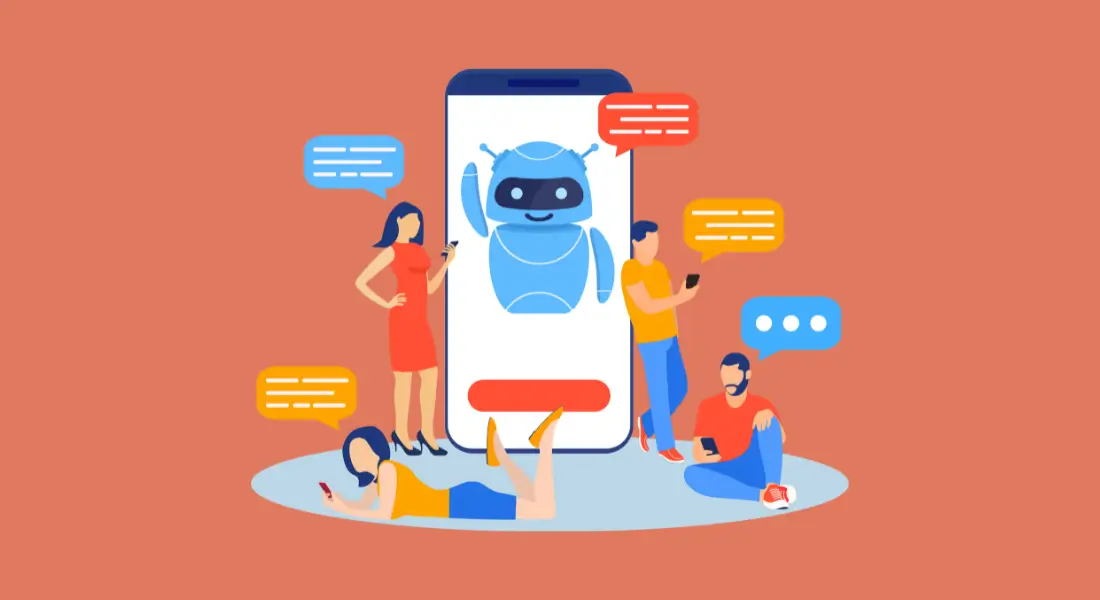
- Building Trust Through Instant Assistance: When customers have instant access to help, they feel more confident and supported. Live chat, whether staffed by human agents or automated chatbots, ensures that customer inquiries are addressed promptly, reducing hesitation and improving the likelihood of a purchase. Omnichannel customer service examples from eCommerce platforms show that real-time chat can handle questions on product specifications, shipping times, and in some cases, facilitate guided product selection.
- 24/7 Availability with AI Chatbots: AI chatbots allow brands to offer pre-sales support around the clock, making assistance available even outside of business hours. This capability is particularly useful in a global marketplace, where customers may be browsing from different time zones. By leveraging chatbots that integrate seamlessly across website and app channels, brands demonstrate the efficiency of their omnichannel customer service, ensuring that customers always have a helpful response on hand. Many omnichannel customer service examples from global brands highlight the impact of chatbots in sustaining high levels of customer engagement pre-sale, even when live agents are unavailable.
Product Recommendations: Personalizing Customer Service with Predictive Tools
Personalized product recommendations are an increasingly powerful tool in the pre-sales phase, guiding customers to items that align with their preferences and needs. Omnichannel customer service examples consistently show how predictive algorithms and data-driven recommendations can enhance the customer experience by offering relevant suggestions that add value and reduce decision fatigue.

- Leveraging Customer Data for Targeted Suggestions: By analyzing browsing history, past purchases, and even engagement patterns on social media, brands can recommend products that suit a customer’s unique preferences. This personalized approach is more than just convenience; it enhances the customer’s experience by offering solutions that resonate with them personally. Omnichannel customer service examples from leading online retailers illustrate how effective these data-driven recommendations can be in improving conversion rates, as customers are often more inclined to buy when they see relevant products.
- Cross-Channel Consistency in Recommendations: Personalized recommendations are most effective when they carry over across all channels, creating a cohesive experience. When a customer receives a product recommendation on the website, sees a similar suggestion on the app, and is later reminded via email, it reinforces the brand’s understanding of their preferences. Omnichannel customer service examples demonstrate that brands using consistent recommendations across channels create a connected journey that encourages engagement and purchase. This approach not only enhances customer satisfaction but also increases the chances of repeat interactions.
Social Media Engagement: Using Platforms to Answer Questions and Share Product Information
Social media has become a crucial platform for pre-sales support, allowing brands to reach and engage with potential buyers in real time. Omnichannel customer service examples show that brands effectively using social media as a pre-sales channel can answer questions, provide product information, and build relationships with customers. Platforms like Facebook, Instagram, and Twitter are especially valuable in delivering quick responses and personalized support to customers before they even visit a brand’s website.
- Real-Time Customer Interaction: Social media engagement allows brands to respond directly to customer inquiries in real time, fostering a sense of connection and responsiveness. Customers may ask questions about product details, availability, or shipping policies, and by providing prompt, helpful replies, brands build trust and transparency. Omnichannel customer service examples illustrate that brands with a strong social media presence and rapid response times can often convert casual browsers into buyers by creating a positive impression at the pre-sales stage.
- Using Social Media for Product Education and Inspiration: Beyond answering questions, social media is also an effective medium for educating customers about products. By sharing videos, tutorials, and user-generated content, brands can inspire potential customers and showcase product benefits. Many successful omnichannel customer service examples show brands that use Instagram Stories, YouTube demos, and live-streamed Q&A sessions to provide a hands-on view of their products, helping to engage and educate customers before they commit to a purchase.
Interactive Content: Providing Tutorials, Guides, and Videos for Product Education
Interactive content, such as tutorials, product guides, and videos, plays a critical role in helping potential customers understand and appreciate a brand’s offerings. Omnichannel customer service examples highlight that by offering educational content across multiple channels, brands can support customers who are in the research phase of the buying journey, making the pre-sales experience more engaging and informative.

- Creating a Knowledgeable Buyer with Product Tutorials and Guides: When customers are provided with comprehensive tutorials and product guides, they are better equipped to make informed purchasing decisions. These resources can be presented in multiple formats, such as detailed articles on the website, interactive guides on a mobile app, or video demonstrations on social media. Omnichannel customer service examples show that brands investing in well-crafted, cross-channel educational content help potential buyers feel more confident and reduce any uncertainty or doubts.
- Interactive Videos for Enhanced Customer Engagement: Videos are a highly engaging form of content that can illustrate product features and use cases in a way that text alone cannot. Brands that share videos across platforms like YouTube, Instagram, and their own website can showcase how products work, answer common questions, and demonstrate the value they offer. Omnichannel customer service examples reveal that brands with a strong video content strategy see higher engagement levels and conversions, as customers can visualize how a product fits into their lives, making it easier to say “yes” to a purchase.
By integrating live chat and AI chatbots, providing personalized product recommendations, actively engaging on social media, and offering interactive educational content, brands can optimize their omnichannel customer service in the pre-sales phase. These strategies align with many successful omnichannel customer service examples, demonstrating that when brands meet customers’ needs before purchase, they build stronger connections, enhance the shopping experience, and ultimately drive conversion rates.
Case Studies of Pre-Sales Omnichannel Service
Case studies offer a tangible look at how brands can use omnichannel customer service to optimize the pre-sales phase. Many successful omnichannel customer service examples reveal the strategic ways that companies integrate personalized support, data-driven recommendations, and interactive tools to connect with potential buyers. Below, we explore how three prominent brands—Sephora, Amazon, and Zappos—use omnichannel customer service to elevate the pre-sales experience, build trust, and improve conversion rates.
Each of these companies serves as an example of how to create a seamless, informative pre-sales journey that aligns with customer needs and expectations. By examining these omnichannel customer service examples, we can see how strategic investments in AI, chatbots, customer data, and personalized support drive engagement and improve pre-purchase decision-making.
Sephora: Leveraging AI and Chatbots to Guide Customers in Their Purchasing Journey
Sephora is a standout among omnichannel customer service examples, as it consistently uses innovative technology to enhance the customer experience, especially during the pre-sales phase. Known for its focus on personalization, Sephora has adopted AI and chatbot technology to guide customers through product selection, ensuring they feel supported and informed before making a purchase.
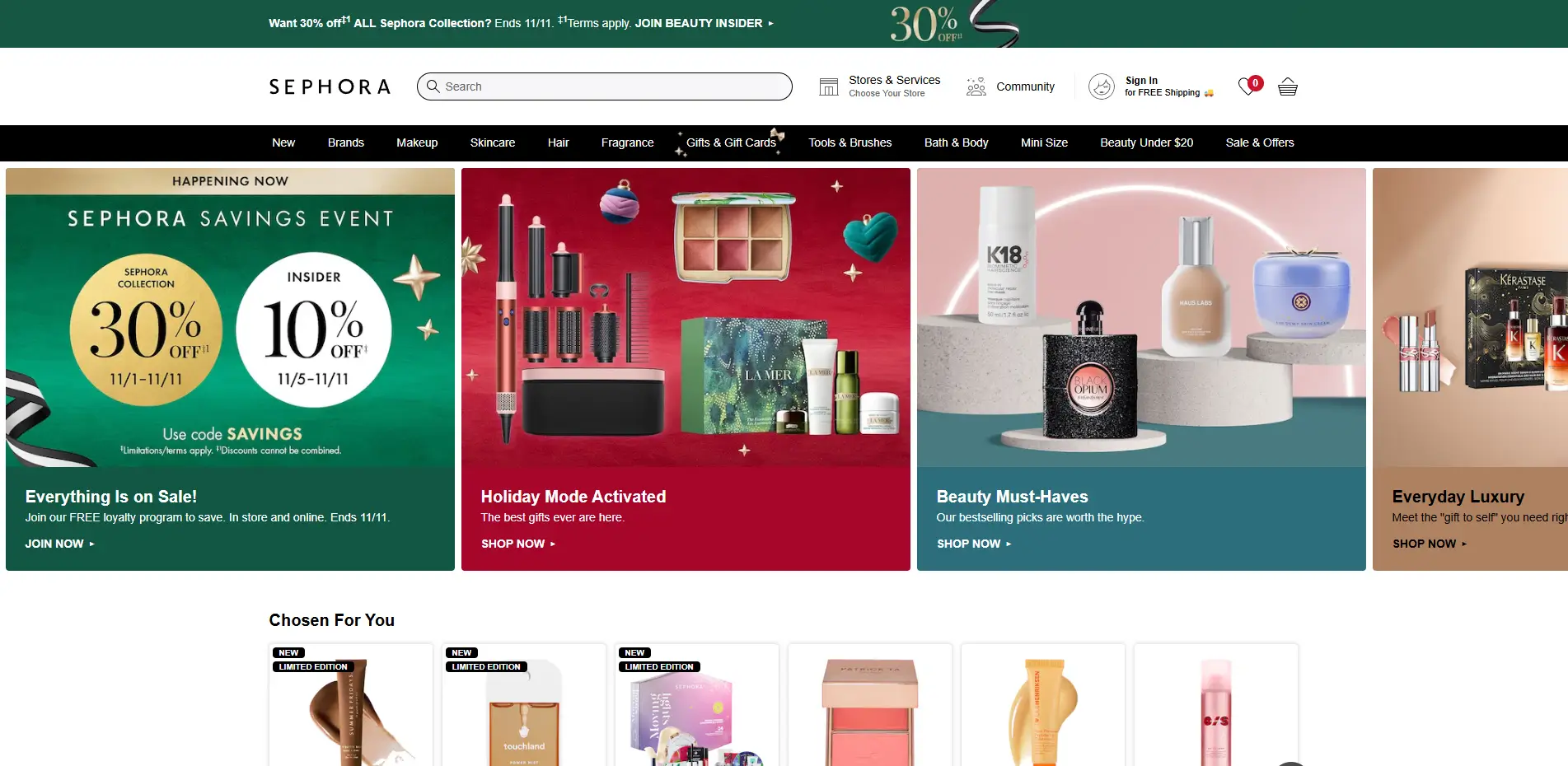
- AI-Powered Chatbot for Personalized Recommendations: Sephora’s chatbot provides personalized beauty recommendations based on each customer’s profile, skin type, and preferences. The chatbot is available across various platforms, including the website, mobile app, and social media, giving customers the flexibility to seek assistance through the channel they find most convenient. This AI-powered chatbot asks questions to understand customer needs, suggests products accordingly, and can even provide tutorial links to help potential buyers understand how to use specific products. Sephora’s approach is a prime example of how omnichannel customer service can empower customers with tailored solutions, making their shopping experience feel more like a personalized consultation than a standard retail interaction.
- Cross-Platform Integration for a Seamless Experience: One of Sephora’s strongest assets is its integration of customer service across multiple platforms. Whether a customer is on the website, using the Sephora app, or following the brand on social media, they encounter consistent messaging and support. The chatbot’s integration across platforms means that customers can seamlessly transition from one channel to another without repeating their information, creating a unified, cohesive pre-sales experience. This integration exemplifies the essence of omnichannel customer service, as Sephora meets customers wherever they are and provides support without interruption, enhancing customer satisfaction and reinforcing brand loyalty.
Amazon: Personalized Recommendations Using Customer Data Across Channels
Amazon is one of the best-known omnichannel customer service examples, excelling at using data to drive personalized recommendations throughout the customer journey. In the pre-sales phase, Amazon uses a sophisticated data analysis approach to offer targeted product suggestions, enhancing the customer’s browsing experience and guiding them toward relevant products.
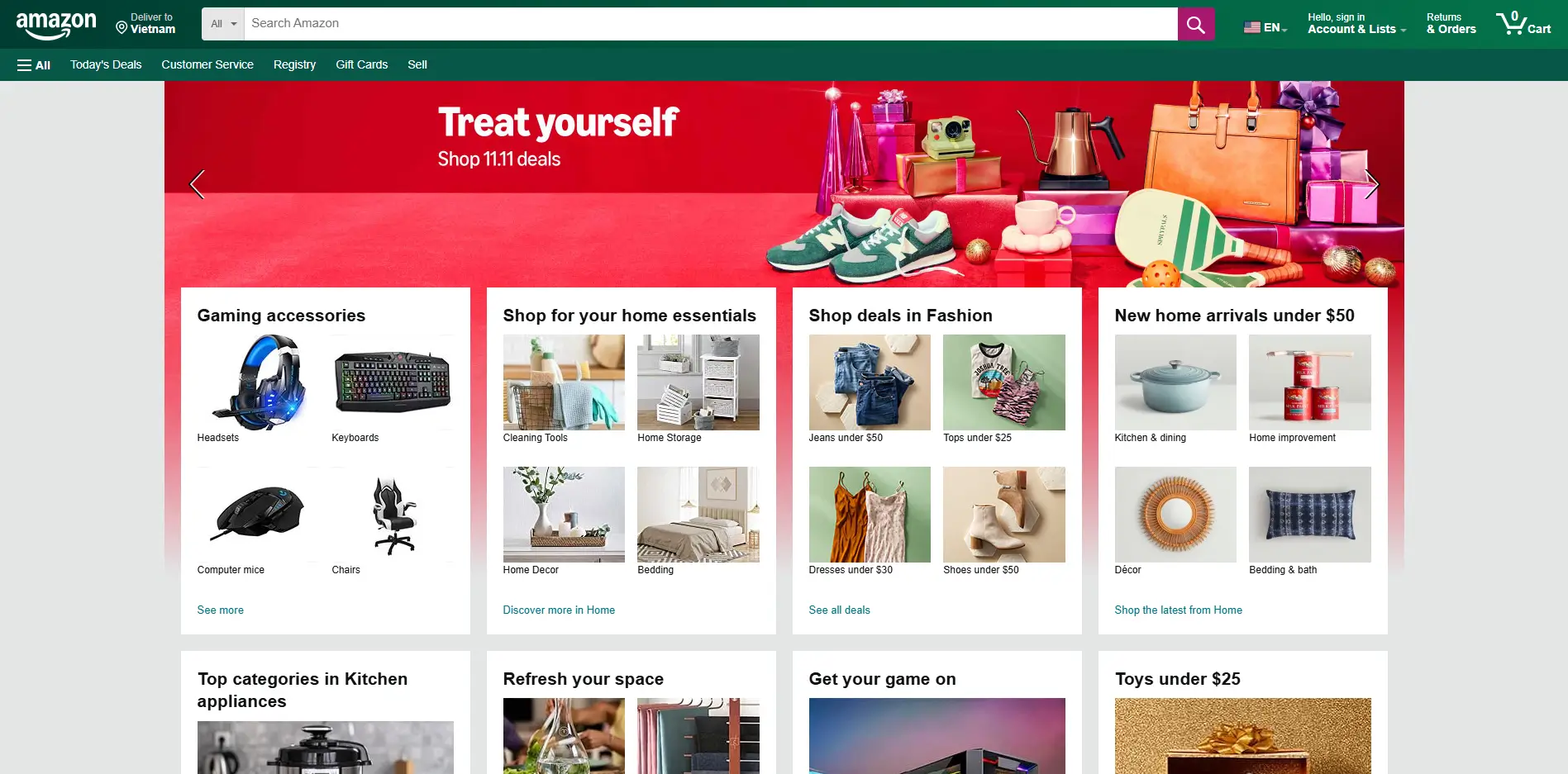
- Data-Driven Personalization for Targeted Recommendations: Amazon’s ability to recommend products based on customer data is at the core of its omnichannel strategy. By analyzing browsing history, past purchases, and general shopping behavior, Amazon can suggest products that align with each customer’s preferences. For instance, a customer browsing camping gear may receive recommendations for related items, such as portable cooking equipment or hiking apparel. This highly personalized approach reduces decision fatigue and helps customers quickly find what they need. Amazon’s use of data-driven personalization in the pre-sales phase demonstrates how omnichannel customer service examples can leverage technology to offer relevant, timely suggestions that encourage buying.
- Cross-Channel Continuity in Recommendations: Amazon’s product recommendations extend beyond the website to other platforms, including its mobile app and email. For instance, if a customer views a product on the Amazon website, they may later receive an email or app notification featuring similar or complementary products. This continuity across channels allows Amazon to remain top-of-mind and keep customers engaged in the pre-sales phase. Omnichannel customer service examples like Amazon highlight the effectiveness of maintaining cross-channel consistency, as it not only reminds customers of products they may want but also encourages them to explore Amazon’s offerings in depth.
Zappos: Providing Chat, Phone, and Email Support for Personalized Pre-Sales Engagement
Zappos, known for its outstanding customer service, stands out among omnichannel customer service examples by prioritizing personal connection and accessibility. During the pre-sales phase, Zappos offers multiple support channels—including chat, phone, and email—to ensure that potential buyers receive answers and advice promptly. This multi-channel approach provides customers with various options to reach support, making Zappos both accessible and responsive.
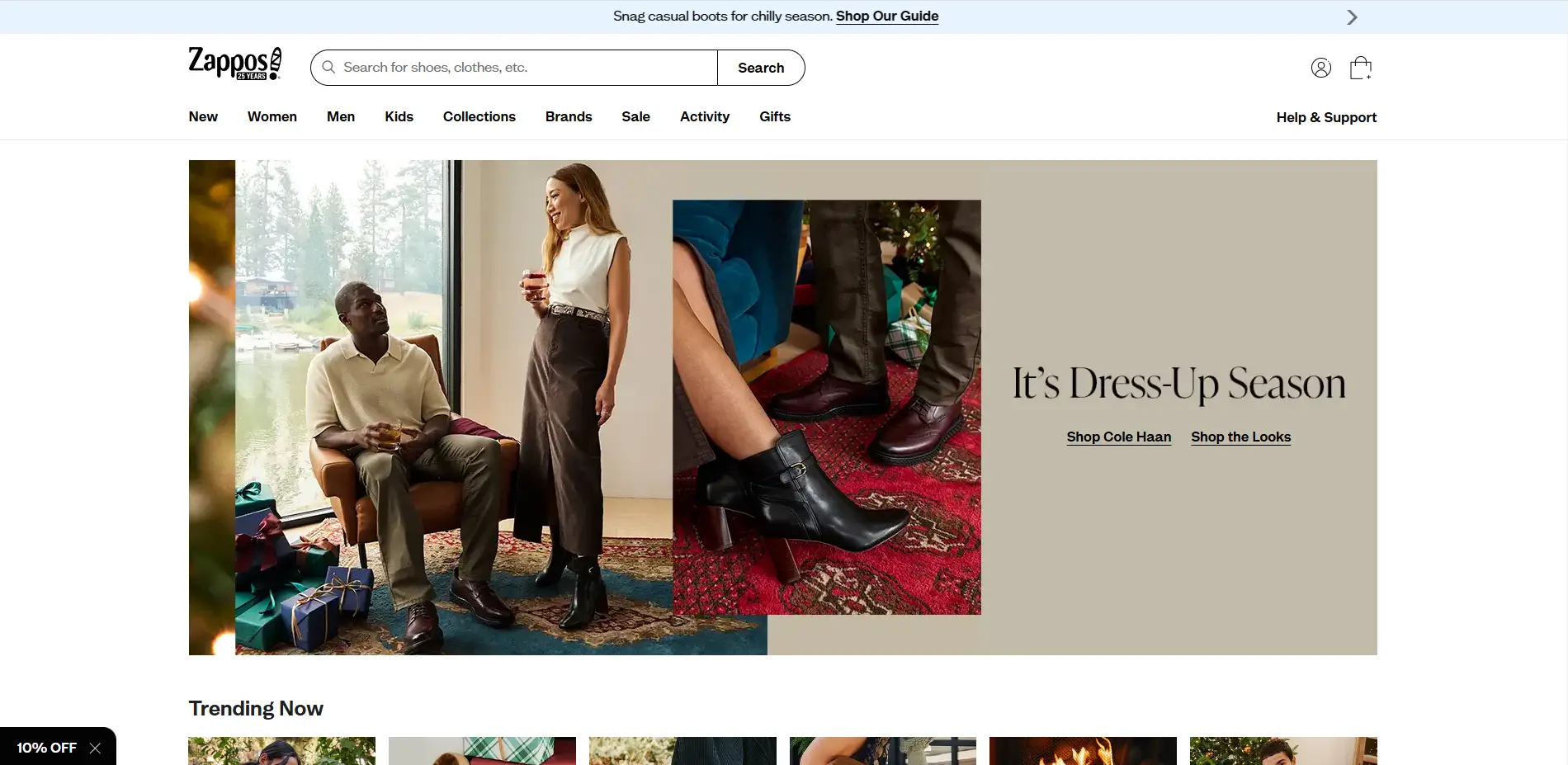
- Real-Time Engagement Through Chat and Phone Support: Zappos has invested in live chat and phone support to create a more direct, interactive pre-sales experience. Customers browsing the website or mobile app can use chat to ask specific questions, whether about product fit, sizing, or availability. If customers prefer a more personal touch, they can call Zappos’ customer support team and speak with a representative. This level of accessibility allows Zappos to address customer concerns in real time, ensuring that any hesitation or uncertainty can be quickly resolved. Zappos exemplifies how omnichannel customer service examples can use real-time engagement to provide immediate support that boosts confidence and encourages purchasing.
- Personalized Assistance Through Email Support: Zappos also uses email as an effective pre-sales support channel, giving customers the flexibility to receive detailed answers on their own time. For more complex inquiries, Zappos’ customer service team can provide in-depth responses and even follow up with personalized recommendations based on previous purchases or browsing behavior. By offering detailed, thoughtful responses, Zappos creates a supportive pre-sales experience that meets the customer’s needs and fosters trust. As shown in many omnichannel customer service examples, providing email support as part of a broader service strategy enhances customer satisfaction and encourages repeat interactions.
Lessons from Pre-Sales Omnichannel Customer Service Examples
Sephora, Amazon, and Zappos each provide unique insights into how brands can optimize pre-sales customer service by leveraging personalized support, data integration, and multi-channel accessibility. The following lessons highlight what makes these omnichannel customer service examples successful:
- Seamless Integration Across Channels: All three brands show the importance of integrating customer service across channels, creating a consistent experience that feels unified. Sephora’s chatbot, Amazon’s cross-channel recommendations, and Zappos’ multi-platform support demonstrate that when customers can move between channels effortlessly, they feel more connected to the brand.
- Use of Personalization for Relevant Support: Personalization is central to each brand’s pre-sales strategy. By offering customized recommendations, relevant content, and tailored answers, these omnichannel customer service examples show that brands can cater to individual customer needs, enhancing their overall experience and building trust.
- Multi-Channel Accessibility for Immediate Support: A strong omnichannel approach includes multiple touchpoints that offer immediate, real-time support. Zappos’ chat and phone support, combined with Sephora’s AI chatbot, illustrate that when customers can get fast answers, they’re more likely to proceed with a purchase.
By studying these omnichannel customer service examples, businesses can gain valuable insights into how they, too, can optimize their pre-sales support to engage customers, address concerns, and drive conversions. Whether through real-time chat, personalized recommendations, or cross-platform engagement, brands can use these strategies to elevate their pre-sales customer service and create a smoother path to purchase.
Enhancing Customer Service During Sales Through Omnichannel Strategies
While pre-sales support helps set the stage for a smooth purchasing experience, effective customer service during the actual sales process is equally essential. Omnichannel customer service examples illustrate that supporting customers during the purchase journey is critical for reducing cart abandonment, ensuring a seamless transition from browsing to buying, and addressing any last-minute concerns that might prevent a sale. The success of an omnichannel strategy depends on providing continuous, consistent support at this stage, ensuring that customers feel confident in their purchasing decisions. A strong focus on seamless in-process support can mean the difference between a one-time transaction and a loyal, repeat customer.
Importance of Seamless In-Process Support
Seamless in-process support is vital to keeping customers satisfied and reducing frustration as they navigate the purchase journey. Numerous omnichannel customer service examples highlight how providing real-time assistance during this stage can strengthen trust, ensure a smooth buying experience, and ultimately lead to higher conversion rates.
Maintaining A Positive Experience During the Purchase Journey
The purchase journey can be full of questions and potential hesitation, even after a customer has decided on a product. Whether it’s navigating the checkout process, applying discounts, or choosing delivery options, customers often encounter points of friction that can make them second-guess their decision. Effective omnichannel customer service examples demonstrate how brands can address these issues proactively, smoothing out the process and preventing cart abandonment.
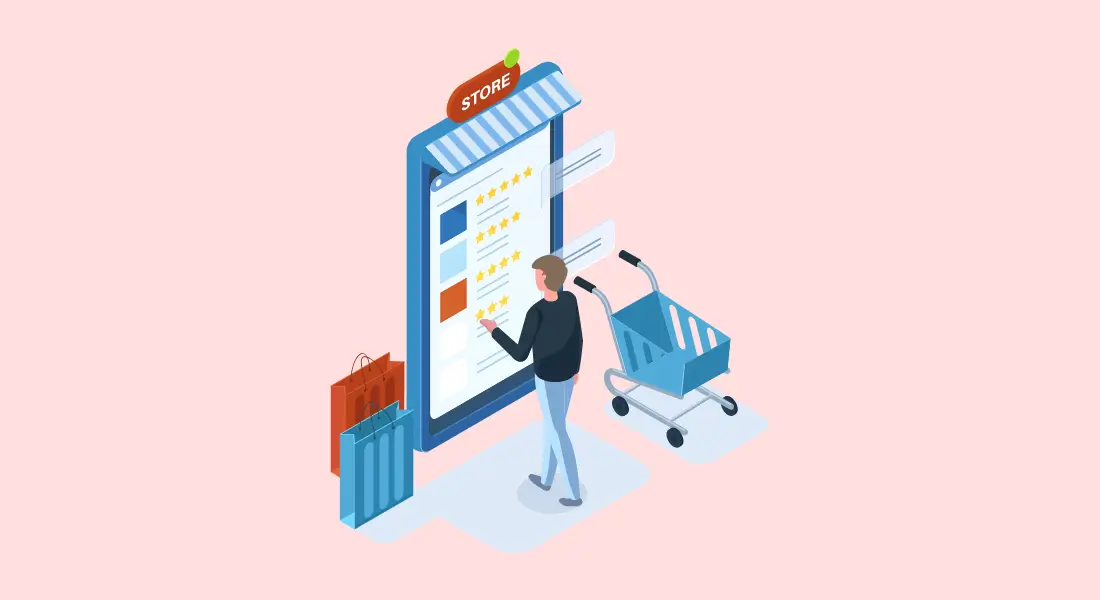
- Eliminating Friction Points: The key to a positive in-process experience is reducing or eliminating any obstacles that could disrupt the purchase journey. This might include providing a clear and simple checkout process, easy access to payment options, and proactive assistance with potential issues like promo code errors or delivery questions. Many successful omnichannel customer service examples, such as those from major retailers, show how real-time assistance can address these friction points and keep customers on track toward completing their purchase. For instance, a live chat feature at checkout can help answer last-minute questions, while app notifications remind customers of pending items in their cart.
- Consistent Support Across Channels: One of the hallmarks of seamless in-process support is the ability to provide consistent assistance across all channels. For instance, a customer who initiates a purchase on a mobile app and later has questions while on the website should be able to receive uninterrupted support. Leading omnichannel customer service examples emphasize the importance of cross-channel continuity, ensuring that all customer information is shared and accessible regardless of where the customer engages. This continuity fosters trust and confidence, as customers know they won’t have to restart their journey or explain their needs repeatedly.
Handling Customer Issues in Real-Time Across Channels
Issues or questions that arise during the purchase process need to be addressed immediately, as delays can lead to abandoned carts or lost sales. Effective omnichannel customer service examples show that when brands can resolve in-process issues in real-time across multiple channels, they significantly improve the likelihood of purchase completion. Real-time support allows brands to respond quickly to customer needs, offering solutions that prevent frustration and support a successful transaction.
- Real-Time Live Chat and Chatbots: Live chat and AI chatbots are powerful tools for handling in-process issues, providing instant assistance when customers face challenges during checkout. Omnichannel customer service examples frequently showcase how brands integrate live chat into various channels—such as websites, apps, and social media platforms—to provide immediate responses to customer queries. This type of support is crucial in resolving issues like payment errors, confirming item availability, or answering shipping questions, all of which are common points of concern during checkout. By providing real-time responses, brands can quickly eliminate any barriers to purchase.
- Cross-Channel Support to Address Specific Issues: Sometimes, a customer may start a transaction on one channel, encounter an issue, and switch to another for help. For example, a customer might have trouble checking out on a website and then reach out via the app or social media for support. Omnichannel customer service examples from top brands show that providing cross-channel support is essential for ensuring that customers receive uninterrupted assistance. When customer information and purchase details are shared across platforms, agents can access the customer’s journey, troubleshoot effectively, and offer solutions without the customer having to start over. This approach not only solves the immediate issue but also demonstrates a commitment to customer service excellence.
- Empowering Staff with Real-Time Customer Data: In many omnichannel customer service examples, brands equip their service teams with real-time data access to improve in-process support. This access allows representatives to see what items are in a customer’s cart, their browsing history, or any previous inquiries they may have made. By leveraging this information, support agents can offer personalized help, suggest relevant upsell options, or provide troubleshooting assistance that is directly relevant to the customer’s journey. Empowering staff with real-time data not only resolves issues faster but also creates a positive, memorable customer experience that encourages future purchases.
All in all, seamless in-process support is a critical component of an effective omnichannel customer service strategy, as shown in numerous omnichannel customer service examples. By ensuring that customers have access to real-time, cross-channel assistance during their purchase journey, brands can remove potential barriers, enhance customer satisfaction, and increase the likelihood of successful transactions. This approach not only improves conversion rates but also strengthens the overall customer relationship, paving the way for loyalty and repeat business.
Real-Time Support Strategies
These strategies offer valuable insights into how brands can make the purchase journey seamless and frictionless for customers, with each touchpoint and platform working in harmony to deliver real-time solutions to customer needs.
Online and In-App Chat Support: Addressing Questions and Solving Issues During Purchase
Online and in-app chat support are essential components of real-time customer service, providing customers with instant access to assistance when they encounter questions or issues while browsing or completing a purchase. Many omnichannel customer service examples show that offering live chat on websites and within mobile apps not only supports customers in the moment but also boosts their confidence in making a purchase.
- Quick Resolution of Customer Queries: Live chat allows customers to get answers to their questions without leaving the page they’re on, reducing the likelihood of frustration or cart abandonment. For instance, if a customer is browsing for specific details on a product, a live chat agent can answer questions about specifications, stock availability, or delivery options in real-time. Omnichannel customer service examples from major eCommerce platforms highlight that live chat, whether staffed by human agents or AI-powered chatbots, creates a seamless shopping experience by addressing inquiries as they arise, enabling customers to make faster, more informed purchasing decisions.
- In-App Support for Mobile Users: As more customers shop via mobile devices, in-app support has become essential. Many successful omnichannel customer service examples demonstrate that brands offering in-app support help customers resolve issues without needing to switch to another platform. For example, if a customer encounters a payment issue within the app, in-app chat support can provide immediate guidance, often reducing frustration and allowing the customer to complete the purchase without delay. By making help easily accessible within the app, brands can cater to mobile shoppers, who now make up a significant portion of online consumers.
Omnichannel Payment Solutions: Ensuring Customers Can Pay Easily Across Different Platforms (Mobile, In-Store, Online)
Seamless payment options are a cornerstone of an effective omnichannel strategy. Omnichannel customer service examples show that by offering flexible payment solutions across multiple platforms, brands can make the purchase process more convenient and inclusive, catering to customers’ preferred payment methods and reducing barriers to checkout.

- Unified Payment Methods Across Channels: Successful omnichannel customer service examples highlight that customers should be able to use their preferred payment methods regardless of where they shop. Whether they’re paying online, in-store, or through a mobile app, brands that offer a consistent range of payment options make it easier for customers to complete their purchase. For example, digital wallets like Apple Pay, Google Pay, and PayPal, as well as credit and debit card payments, should be available across all channels. Unified payment options reduce friction in the checkout process, making it simpler and faster for customers to pay, no matter where they are shopping.
- Secure, One-Click Payments for Convenience: A growing number of omnichannel customer service examples show brands implementing secure, one-click payment options that minimize steps at checkout. By storing customer information securely and enabling one-click payment, brands can streamline the checkout experience, particularly on mobile devices. This added convenience reduces the likelihood of cart abandonment, especially for repeat customers who have already saved their payment information. This approach ensures that the payment process is fast, secure, and intuitive, directly enhancing customer satisfaction and improving sales conversion rates.
Mobile Optimization: Creating a Frictionless Experience for Mobile Shoppers
With mobile commerce growing rapidly, optimizing the mobile shopping experience is critical. Many omnichannel customer service examples illustrate that a mobile-friendly approach not only enhances the shopping experience but also increases conversions, as customers are more likely to complete purchases on sites and apps that are easy to navigate and responsive to their needs.
- Responsive Design and User-Friendly Navigation: Mobile optimization begins with responsive design, ensuring that websites and apps function smoothly on all screen sizes. Successful omnichannel customer service examples show that brands focusing on intuitive navigation, streamlined menus, and optimized load times keep customers engaged throughout the shopping experience. By offering easy-to-use mobile interfaces, brands can reduce friction for customers and create a more enjoyable shopping journey, whether customers are browsing, adding items to their cart, or checking out.
- Enhanced Mobile Features for Convenience: Mobile optimization often includes features specifically designed for convenience on smaller screens. These may include autofill options for forms, one-click checkout buttons, and clear calls-to-action that help guide customers through the purchase process. Many omnichannel customer service examples from mobile-centric brands demonstrate that offering mobile-exclusive features, such as personalized recommendations or in-app purchase incentives, enhances the shopping experience for mobile users and helps boost engagement and sales.
Click-and-Collect/Buy Online, Pick Up In-Store (BOPIS): Managing Customer Expectations and Convenience
The buy online, pick up in-store (BOPIS) option has become a popular choice for customers seeking convenience and flexibility in their shopping experience. Omnichannel customer service examples frequently showcase BOPIS as an effective strategy for bridging online and offline channels, allowing customers to shop in a way that suits their schedules.

- Providing Flexibility and Reducing Delivery Costs: Click-and-collect options are attractive to customers because they offer the convenience of online shopping combined with the immediate gratification of in-store pickup. This option allows customers to avoid delivery costs and delays while giving them control over when and where they collect their items. Omnichannel customer service examples show that brands with well-integrated BOPIS options manage customer expectations by providing clear instructions, pick-up windows, and notifications, ensuring that customers know when and where their items are ready for collection.
- Enhancing the In-Store Experience: Click-and-collect doesn’t only benefit customers; it can also enhance the in-store experience. Many omnichannel customer service examples demonstrate that brands offering BOPIS create opportunities for additional purchases when customers come to collect their orders. By offering personalized recommendations, exclusive in-store discounts, or a streamlined pick-up process, brands can turn BOPIS into a valuable part of the omnichannel journey. The best omnichannel customer service examples showcase brands that use BOPIS to drive customer satisfaction and loyalty by delivering a well-rounded, flexible shopping experience.
Real-time support strategies like online and in-app chat, omnichannel payment solutions, mobile optimization, and click-and-collect illustrate how brands can enhance customer service during the sales process. These omnichannel customer service examples emphasize the importance of accessibility, flexibility, and convenience, allowing customers to move smoothly from browsing to purchase without encountering barriers. By implementing these strategies, brands can create a more satisfying shopping journey, encouraging conversions and building long-term customer loyalty.
Case Studies of During-Sales Omnichannel Service
The effectiveness of customer service during the sales process is crucial in delivering a satisfying and seamless experience. Numerous omnichannel customer service examples highlight the importance of providing real-time support across channels, whether a customer is shopping online, in-store, or on a mobile app. The brands that excel in this area—Walmart, Apple, and Nordstrom—are industry leaders in integrating online and offline systems to create a cohesive shopping journey. By examining these case studies of during-sales omnichannel service, we can understand how these companies leverage technology and customer-centric strategies to enhance the shopping experience and drive customer satisfaction.
Each of these case studies illustrates how omnichannel customer service strategies can be used to bridge digital and physical touchpoints, ensuring that customers have access to real-time support and seamless solutions throughout the sales journey.
Walmart: Seamless Omnichannel Experience with Integrated Online and Offline Systems
Walmart is one of the most cited omnichannel customer service examples, known for its efficient integration of online and offline channels to create a smooth shopping experience for customers. Walmart has implemented several omnichannel features to ensure customers have options when purchasing, whether they choose to shop online, pick up items in-store, or have products delivered to their homes.
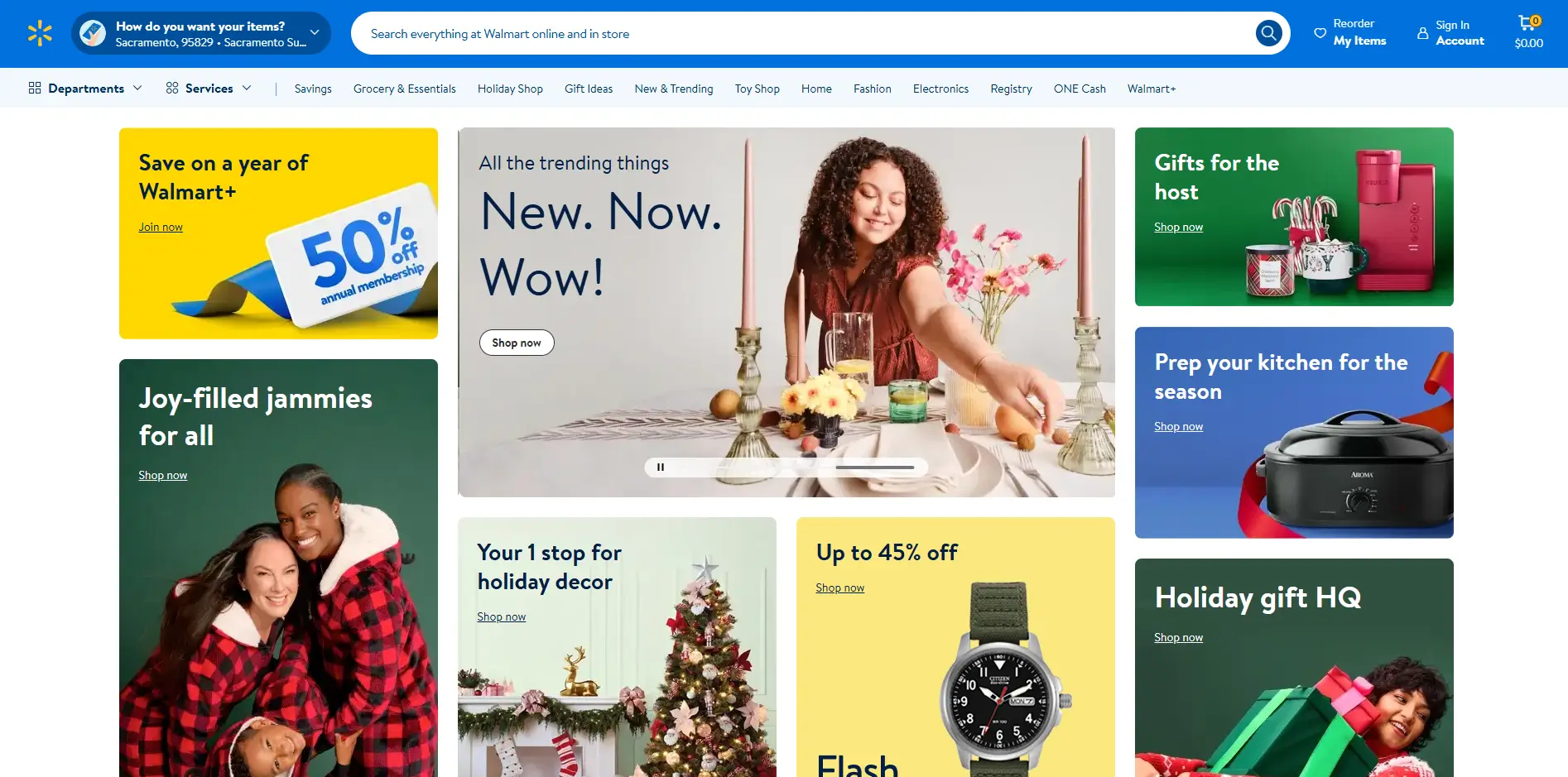
- Real-Time Inventory Updates and In-Store Pickup: Walmart’s app and website provide customers with real-time inventory updates, allowing them to check product availability at their local stores before making a purchase. This feature is particularly useful for customers who want to ensure that the items they need are in stock before visiting the store. Walmart’s “Buy Online, Pick Up In-Store” (BOPIS) option allows customers to place an order online and collect it at a nearby location, saving time and providing convenience. This approach exemplifies how omnichannel customer service examples can meet customer needs across channels, offering flexibility in the purchasing process.
- Seamless Checkout Process with Delivery Options: Walmart’s app simplifies the checkout process by allowing customers to pay online and choose their preferred delivery method, including in-store pickup, curbside delivery, or home delivery. This choice empowers customers to select the option that best fits their schedules. By providing these options in a streamlined manner, Walmart ensures that customers receive a consistent, user-friendly experience. Omnichannel customer service examples from Walmart show how giving customers flexibility in purchasing and pickup can boost customer satisfaction and reduce the friction often associated with in-store shopping.
Apple: Real-Time Support Through Website, App, and In-Store Genius Bar
Apple is a standout among omnichannel customer service examples, recognized for delivering seamless in-process support that helps customers complete their purchases with confidence. Apple’s real-time support across multiple channels, including its website, mobile app, and physical stores, allows customers to move fluidly between online and offline interactions during the sales process.
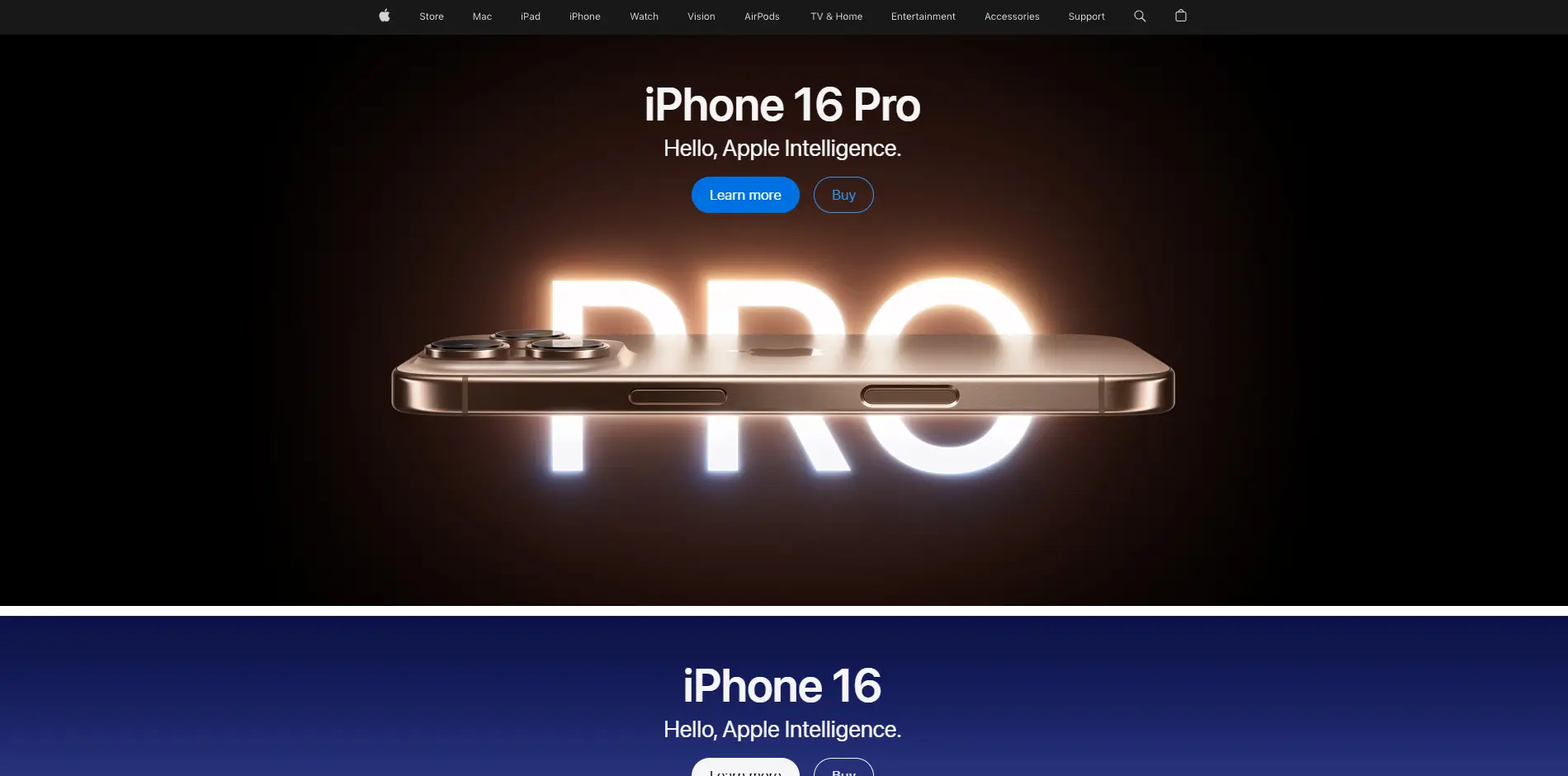
- Appointment Booking and Personalized In-Store Assistance: Apple’s Genius Bar, available at all Apple stores, provides in-person assistance for technical support, product guidance, and troubleshooting. Customers can book appointments through the Apple website or app, which is an excellent example of omnichannel service coordination. This service allows customers to receive personalized help on their purchases or potential purchases, which is especially valuable for customers considering higher-cost products like iPhones, iPads, or Macs. Apple’s Genius Bar demonstrates how personalized in-store support, integrated with online booking, can make a big difference in customer satisfaction, especially for customers needing technical assistance during their buying journey.
- Consistent, Real-Time Support Across Platforms: Apple’s commitment to real-time support extends to its app and website, where customers can speak with support agents via chat or phone to address questions as they arise. For customers purchasing products online, Apple offers the option to receive guidance on selecting the right device or configuration, ensuring they feel confident in their choice. Omnichannel customer service examples like Apple’s show how brands that make real-time support accessible across platforms reduce purchasing hesitations, creating a cohesive experience that builds trust and encourages sales.
Nordstrom: Integrated Online, In-Store, and Mobile Channels for a Fluid Shopping Experience
Nordstrom is a leading example in omnichannel customer service, successfully merging online, in-store, and mobile interactions to create a highly flexible shopping experience. Nordstrom’s approach to customer service during sales demonstrates how to use technology and a customer-first mentality to keep shoppers engaged and satisfied, regardless of the channel they choose to use.
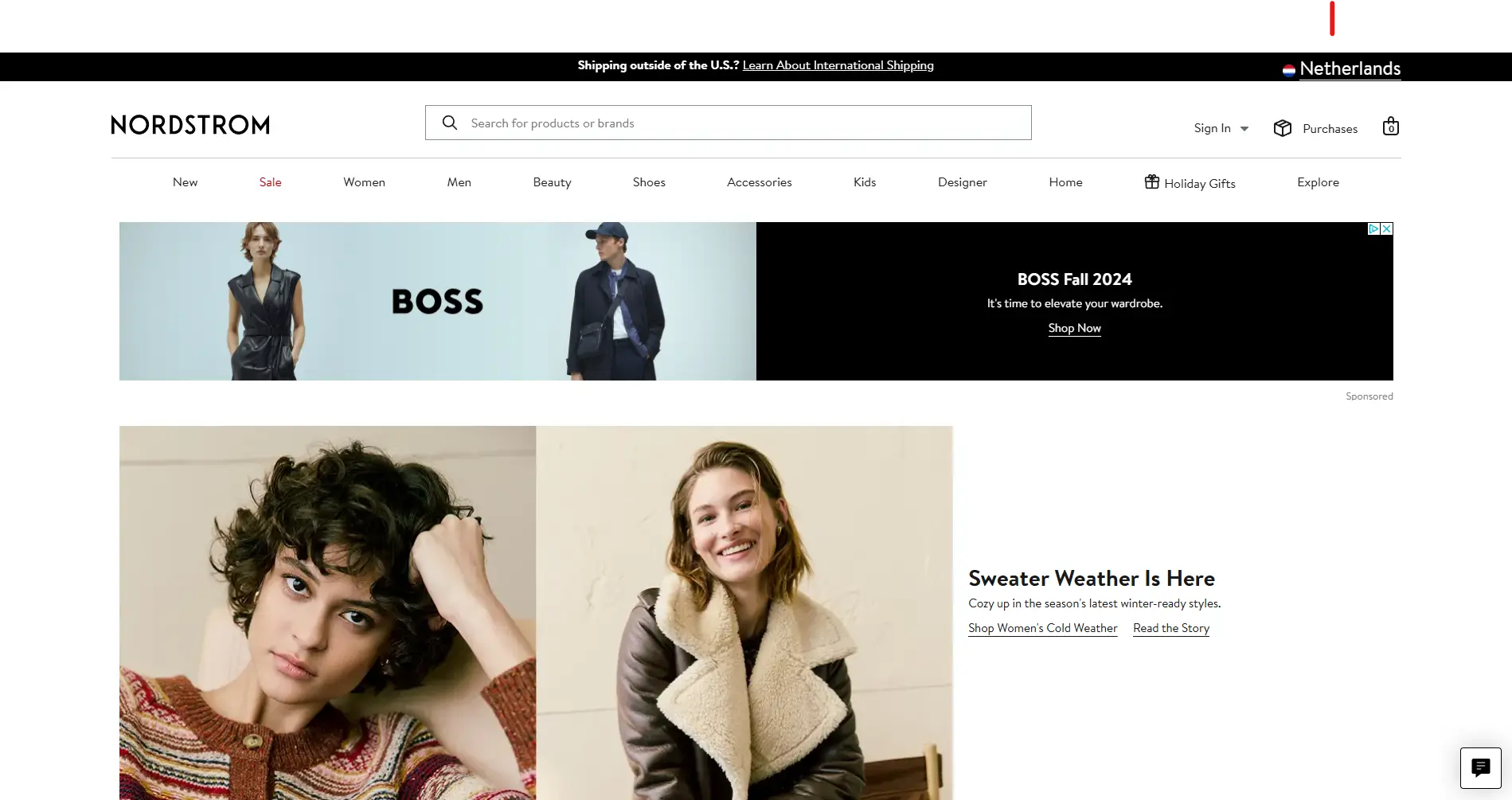
- Order Online, Pick Up In-Store and Same-Day Delivery Options: Nordstrom’s omnichannel experience includes a “Buy Online, Pick Up In-Store” option that allows customers to shop on the website or app and pick up their items at a local store. Additionally, for customers looking for even more convenience, Nordstrom offers same-day delivery options in some areas. These options provide the flexibility that today’s customers expect, allowing them to choose the shopping and delivery method that best fits their schedule. Nordstrom’s BOPIS and delivery services are widely recognized in omnichannel customer service examples as effective ways to make shopping easier and more appealing.
- In-App and In-Store Support for Enhanced Shopping: The Nordstrom app is designed to support the in-store experience by allowing customers to check inventory, locate products, and even access personalized recommendations while shopping. The app integrates with in-store services to help customers quickly find the items they’re looking for, while also providing self-checkout options in some locations. This integration enhances the shopping experience by allowing customers to use the app as a resource while they’re in-store. Omnichannel customer service examples like Nordstrom’s highlight how a well-designed app can complement in-store service, creating a frictionless shopping experience that boosts satisfaction.
Key Takeaways from During-Sales Omnichannel Customer Service Examples
The omnichannel customer service examples of Walmart, Apple, and Nordstrom each offer valuable insights into effective strategies for supporting customers during the purchase process. Here are some key takeaways that businesses can apply to their own omnichannel strategies:
- Provide Flexibility Through Real-Time Inventory and Delivery Options: Both Walmart and Nordstrom demonstrate that giving customers access to real-time inventory information and flexible delivery or pickup options helps remove barriers to purchase. By allowing customers to see product availability and choose convenient fulfillment methods, brands can make shopping more accessible and cater to customers’ varied preferences.
- Integrate Online and In-Store Support for a Cohesive Experience: Apple and Nordstrom both exemplify how integrating online resources with in-store services can create a unified experience. Apple’s Genius Bar, coupled with online appointment booking and real-time chat, offers customers personalized support, while Nordstrom’s app enhances the in-store shopping experience by providing product information and inventory checks. By ensuring that online and in-store channels are connected, brands can offer a seamless experience that keeps customers engaged, informed, and satisfied.
- Leverage Technology for Real-Time, Multi-Channel Support: Walmart, Apple, and Nordstrom use technology to deliver real-time support across channels, ensuring that customers have access to the assistance they need whenever and wherever they choose to shop. Whether it’s through live chat on a website, app-based support, or in-store tools, omnichannel customer service examples from these brands illustrate how real-time assistance is key to enhancing the shopping journey and boosting conversion rates.
By studying these omnichannel customer service examples, businesses can learn valuable lessons on how to optimize customer support during sales. With a focus on real-time support, cross-channel consistency, and flexible purchasing options, brands can create an exceptional shopping experience that fosters customer loyalty and encourages repeat business.
Delivering Top-Notch Omnichannel Customer Service Post-Sales
While pre-sales and during-sales support are essential to building customer confidence and facilitating purchases, it’s the post-sales phase that often makes the most lasting impression. Effective post-sales support can significantly influence customer loyalty, impacting both retention and repeat business. Many successful omnichannel customer service examples illustrate that when brands prioritize after-sales service, they create loyal customers who are more likely to return for future purchases and recommend the brand to others. Here, we explore the vital role that post-sales support plays in fostering loyalty, driving retention, and maintaining engagement beyond the initial transaction.
The Role of Post-Sales Support in Customer Loyalty
A robust post-sales strategy doesn’t just resolve issues or answer questions; it goes further to engage, reassure, and build ongoing relationships with customers. Examining omnichannel customer service examples reveals that brands investing in post-sales support often see improved retention rates, increased customer satisfaction, and stronger word-of-mouth referrals. Post-sales support creates an opportunity to enhance the customer experience, reinforcing that a brand values its customers beyond the point of sale.
How After-Sales Service Impacts Retention and Repeat Business
Providing dependable post-sales support is essential for retaining customers and encouraging them to make repeat purchases. Omnichannel customer service examples often show that brands that deliver exceptional after-sales service stand out in customers’ minds, creating a positive impression that encourages them to return. Retention isn’t solely about avoiding problems; it’s about reassuring customers that the brand is there to support them at every stage of their journey.
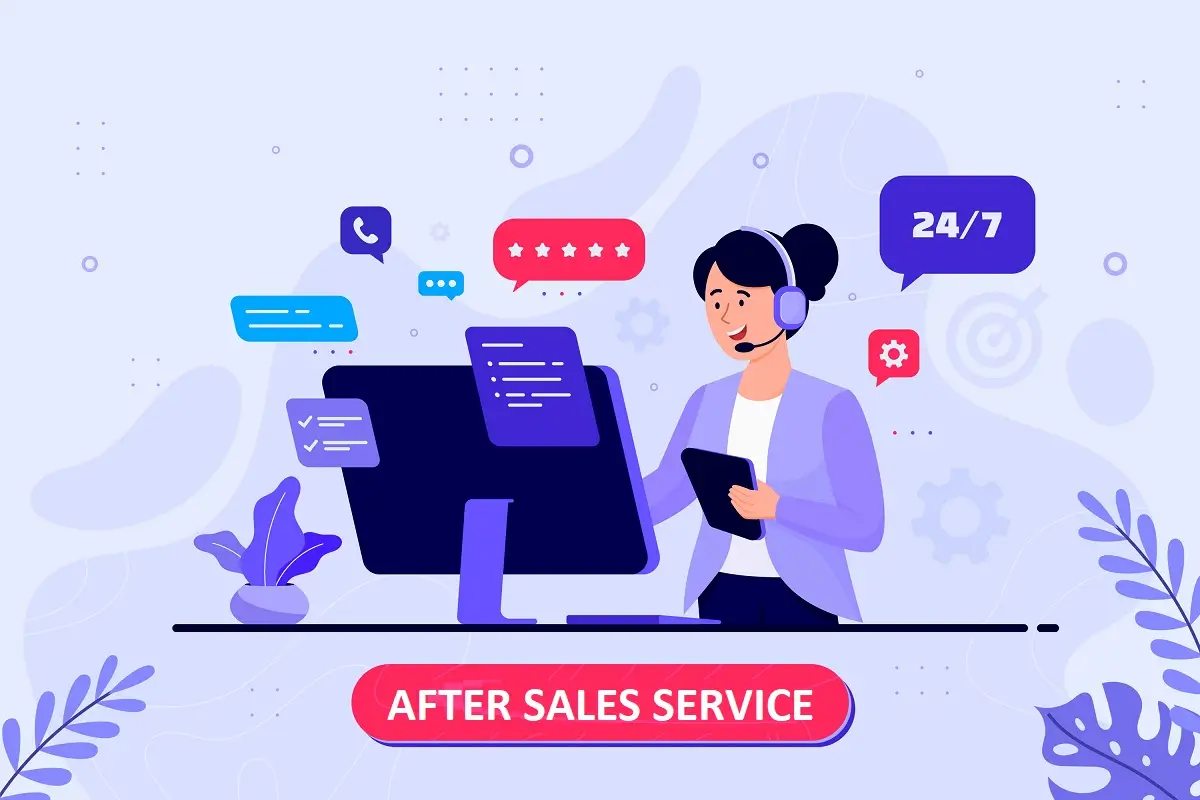
- Building Trust Through Reliable Support: One of the primary reasons post-sales support is critical to customer loyalty is that it establishes trust. When customers know they can rely on a brand to address any concerns, they feel more confident in their purchase and more inclined to buy from the brand again. Omnichannel customer service examples demonstrate that when brands make post-sales support accessible across multiple channels—whether through in-app messaging, online chat, or phone support—they build trust by being readily available to assist whenever issues arise. A customer who has a positive experience resolving a post-sales issue is more likely to develop a favorable view of the brand, which ultimately boosts loyalty.
- Reducing Churn Through Issue Resolution: Many customers cite unresolved issues as a reason for abandoning a brand, which makes efficient problem resolution critical for retention. Omnichannel customer service examples show that brands that respond swiftly and effectively to post-sales inquiries, such as questions about product functionality or return processes, can reduce customer churn. For instance, if a customer reaches out via the website with a question about a recent purchase and then follows up on a mobile app, they should receive consistent support, ideally without needing to repeat their concerns. This seamless support experience reduces frustration, making customers more inclined to remain loyal to the brand.
- Encouraging Repeat Purchases Through Enhanced Customer Experience: Post-sales support also offers opportunities to foster repeat business. Omnichannel customer service examples frequently showcase how brands leverage post-sales interactions to enhance the customer experience and encourage future purchases. For example, after a successful resolution of a product issue, brands may send personalized recommendations or offer a discount on the customer’s next purchase. This approach not only shows appreciation but also invites the customer to continue shopping with the brand, thereby increasing the chances of repeat purchases.
Importance of Maintaining Engagement After the Transaction
Once a purchase is complete, maintaining engagement is key to reminding customers of the brand and keeping them interested in future interactions. Many omnichannel customer service examples highlight how brands that continue to engage customers after the sale create a sense of community, making customers feel valued and connected to the brand. Engagement after the transaction, whether through personalized follow-ups, loyalty programs, or ongoing communication, helps strengthen the customer-brand relationship.
- Proactive Follow-Ups to Enhance Customer Satisfaction: Omnichannel customer service examples often emphasize the importance of proactive follow-ups in keeping customers engaged and satisfied. A simple follow-up email or message thanking the customer for their purchase and inviting feedback can make customers feel appreciated. This approach allows brands to identify any potential concerns before they become problems, giving them an opportunity to resolve issues preemptively. Brands that reach out with follow-up messages on multiple channels—such as email, SMS, or app notifications—show customers that they care about the quality of their experience, reinforcing loyalty and promoting a positive impression.
- Leveraging Loyalty Programs for Ongoing Engagement: Many successful omnichannel customer service examples include loyalty programs as a key strategy for keeping customers engaged post-sale. Loyalty programs encourage repeat purchases by rewarding customers for their ongoing business, whether through points, discounts, or exclusive perks. Brands that integrate loyalty programs across all channels—allowing customers to access their rewards in-store, online, or through a mobile app—provide a seamless experience that enhances engagement. By rewarding loyalty, brands not only incentivize future purchases but also create a community of customers who feel valued and invested in the brand.
- Offering Educational Content and Product Support: Engaging customers after the transaction isn’t solely about promoting future sales; it’s also about providing value through education and support. Omnichannel customer service examples show that brands offering post-purchase resources, such as how-to guides, FAQs, and video tutorials, keep customers engaged while helping them get the most out of their purchases. By offering educational content across channels—through email, social media, and in-app notifications—brands can support customers even after the sale, improving their overall satisfaction and building loyalty.
- Personalized Recommendations for Long-Term Engagement: Personalization is another powerful tool for post-sales engagement, as demonstrated by numerous omnichannel customer service examples. By analyzing customer purchase history and preferences, brands can send tailored recommendations that align with each customer’s interests. For instance, after purchasing a skincare product, a customer might receive personalized suggestions for complementary items via email or app notifications. This ongoing engagement keeps the brand top-of-mind, reminding customers of relevant products and driving potential repeat purchases. Personalization also signals to customers that the brand understands their needs, which strengthens the relationship and encourages long-term loyalty.
The role of post-sales support in building customer loyalty cannot be understated. Omnichannel customer service examples from industry leaders demonstrate that providing consistent, proactive support after the transaction significantly impacts retention and repeat business. By maintaining engagement through follow-ups, loyalty programs, and personalized recommendations, brands can foster a positive post-sales experience that strengthens customer relationships and encourages long-term loyalty. This ongoing engagement builds a foundation of trust and satisfaction, turning one-time buyers into loyal, repeat customers who advocate for the brand.
Key Strategies for Post-Sales Omnichannel Customer Service
A seamless post-sales experience is essential for sustaining customer satisfaction and loyalty. The following key strategies, illustrated in various omnichannel customer service examples, reveal how top brands keep customers engaged and supported after the sale.
Order Tracking and Notifications: Keeping Customers Updated Across Multiple Channels
Providing real-time order tracking and timely notifications is one of the simplest yet most impactful post-sales services. Omnichannel customer service examples frequently highlight that order tracking keeps customers informed, reassured, and engaged, improving the post-purchase experience. Tracking and notifications ensure that customers feel confident about their purchase and provide them with a sense of control over the delivery process.
- Multi-Channel Order Tracking for Transparency and Convenience: Customers appreciate having the ability to check the status of their orders on their preferred channels, such as through email, SMS, or mobile apps. By offering multi-channel tracking options, brands meet customers where they are, allowing them to stay updated without having to search for information. Omnichannel customer service examples show that brands with clear, accessible tracking on websites, apps, and messaging platforms not only reduce customer inquiries but also enhance trust. Real-time updates about the shipping process, estimated delivery times, and any potential delays help manage expectations and foster a positive post-purchase experience.
- Proactive Notifications for Reassurance: Notifications sent at key stages—such as order confirmation, dispatch, out-for-delivery, and delivery completion—provide customers with the reassurance that their purchase is being handled efficiently. Many omnichannel customer service examples illustrate that proactive notifications reduce customer anxiety and potential dissatisfaction, as customers appreciate being kept in the loop. Brands that use multiple channels for notifications, such as SMS for immediate alerts and email for detailed updates, show customers that their experience is a priority, further strengthening the brand-customer relationship.
Returns and Refunds: Offering Flexible, Omnichannel Return Policies
A flexible, customer-friendly return policy is a crucial aspect of post-sales service. Omnichannel customer service examples reveal that brands offering easy returns see higher satisfaction rates and increased trust, as customers are more willing to purchase when they know they can return items conveniently. Providing omnichannel return options allows customers to initiate and complete returns through multiple touchpoints, making the process as seamless as possible.
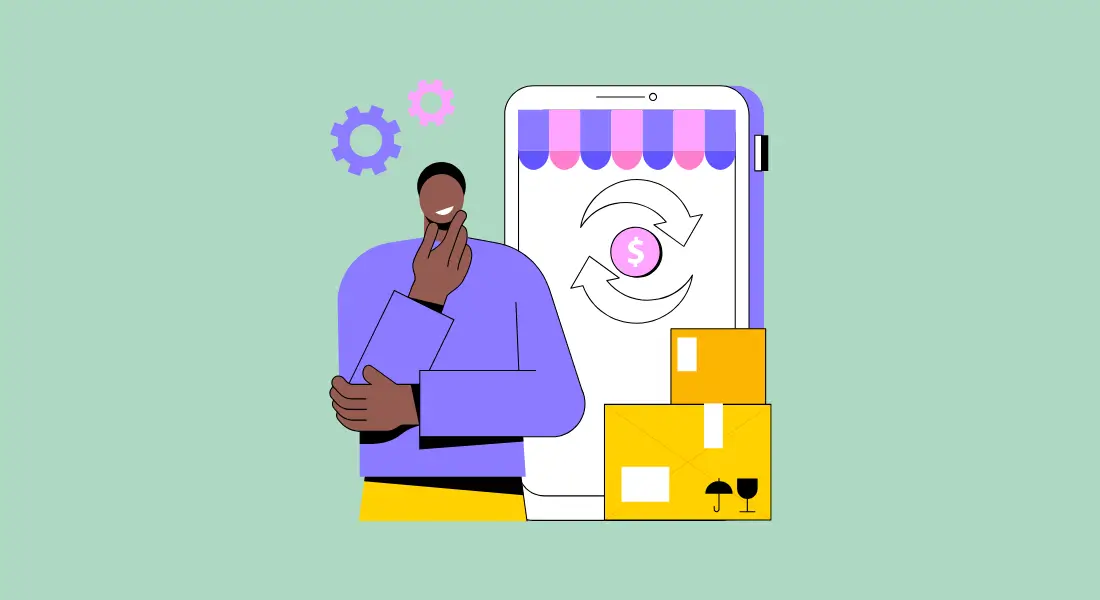
- Omnichannel Returns for Added Convenience: Brands with strong omnichannel strategies allow customers to return items either in-store or online, providing flexibility that enhances the customer experience. For instance, customers can start a return process online and complete it in-store, or initiate a return in-store and ship the item back through the mail. Omnichannel customer service examples from major retailers show that offering this flexibility improves satisfaction, as customers can choose the option most convenient for them. Clear instructions across platforms, such as through website FAQs, in-app guidelines, and customer service chat, further streamline the return process, making it stress-free and customer-centric.
- Automated Return Labels and Quick Refunds: Another feature seen in successful omnichannel customer service examples is automated return labels and expedited refunds. Brands that provide pre-paid return labels make the process easier for customers, who can print labels from their accounts or request one directly from the mobile app. Fast refunds, particularly for in-store returns, help establish trust by showing customers that the brand values their convenience and prioritizes their experience. Ensuring that customers receive refunds quickly, either to their original payment method or as store credit, increases the likelihood that they’ll shop with the brand again.
Follow-Up and Feedback Collection: Using Email, SMS, and Social Media to Collect Post-Purchase Feedback
Collecting customer feedback is essential for brands to improve their offerings and understand customer needs better. Omnichannel customer service examples show that brands that actively seek feedback from customers through multiple channels, such as email, SMS, and social media, gain valuable insights into their post-sales performance. Effective feedback collection not only helps brands improve but also shows customers that their opinions are valued.
- Multi-Channel Feedback Requests for Comprehensive Insights: By reaching out for feedback through email, SMS, and even social media platforms, brands can gather a broader range of responses and gain a fuller picture of the post-purchase experience. Omnichannel customer service examples demonstrate that by personalizing feedback requests based on the customer’s purchase journey—such as asking for input on specific products or the overall shopping experience—brands can increase response rates and obtain more meaningful insights. This data can then be used to refine the customer experience, enhance product offerings, and identify common pain points.
- Incentivizing Feedback for Enhanced Engagement: Offering incentives, such as discount codes or loyalty points, is an effective way to encourage customers to share their feedback. Omnichannel customer service examples illustrate that brands using incentives as part of their feedback strategy can not only improve response rates but also strengthen customer engagement. When customers feel that their feedback is appreciated and rewarded, they are more likely to participate in future surveys and feel a deeper connection to the brand. This ongoing interaction reinforces customer loyalty and builds a positive brand image.
Loyalty Programs and Re-Engagement: Implementing Loyalty Programs That Integrate Seamlessly Across Touchpoints
Loyalty programs are a powerful tool for retaining customers and encouraging repeat purchases, especially when they’re integrated across all touchpoints. Many omnichannel customer service examples showcase brands that use loyalty programs as a key element of their post-sales strategy, offering customers points, rewards, and exclusive benefits in exchange for their continued patronage. These programs strengthen customer relationships by making customers feel valued and recognized.

- Seamless Cross-Channel Loyalty Program Integration: An effective loyalty program should be accessible across all platforms, allowing customers to earn and redeem points whether they shop online, in-store, or through a mobile app. Omnichannel customer service examples from top retailers highlight that brands offering a unified loyalty experience, where customers can track rewards and redeem benefits across channels, enhance engagement and increase the likelihood of repeat purchases. For instance, allowing customers to view their loyalty status on an app and redeem points in-store creates a frictionless experience that reinforces the brand’s commitment to customer convenience.
- Personalized Rewards and Re-Engagement Offers: Personalization is crucial for keeping customers engaged with a loyalty program. By analyzing purchase history and customer preferences, brands can offer tailored rewards and incentives that align with each customer’s interests. Omnichannel customer service examples show that personalized rewards, such as birthday discounts or early access to new products, increase the perceived value of the loyalty program. Reengagement campaigns, such as emails or app notifications reminding customers of expiring points or upcoming promotions, further strengthen loyalty by encouraging customers to remain active participants in the program.
Implementing key post-sales strategies like order tracking, flexible returns, feedback collection, and loyalty programs is essential for delivering exceptional omnichannel customer service. Omnichannel customer service examples from leading brands reveal that by providing continuous support and engaging customers after the sale, companies can enhance satisfaction, build loyalty, and turn one-time buyers into long-term advocates. These strategies not only improve the customer experience but also create a strong foundation for ongoing engagement, fostering a deeper connection between the brand and its customers.
Case Studies of Post-Sales Omnichannel Service
In the post-sales phase, brands have a unique opportunity to solidify relationships with customers by offering consistent, high-quality support and engaging follow-ups. Many successful omnichannel customer service examples highlight that brands prioritizing post-sales service through personalized outreach, flexible support options, and loyalty rewards can build long-term loyalty, increase repeat purchases, and foster brand advocacy. Here, we examine how Nike, IKEA, and Allbirds leverage omnichannel customer service strategies post-sale, providing outstanding examples of how to engage and support customers after a purchase.
These three brands are exemplary in their post-sales approach, illustrating how seamless omnichannel support can lead to a more satisfying and complete customer experience, encouraging customers to return, engage, and remain loyal to the brand.
Nike: Personalized Emails, Push Notifications, and the NikePlus Loyalty Program
Nike is one of the top omnichannel customer service examples for post-sales support, providing personalized and consistent communication through email, app notifications, and its NikePlus loyalty program. Nike’s strategy is focused on keeping customers engaged and adding value to their purchases, demonstrating how targeted post-sales efforts can enhance customer loyalty.
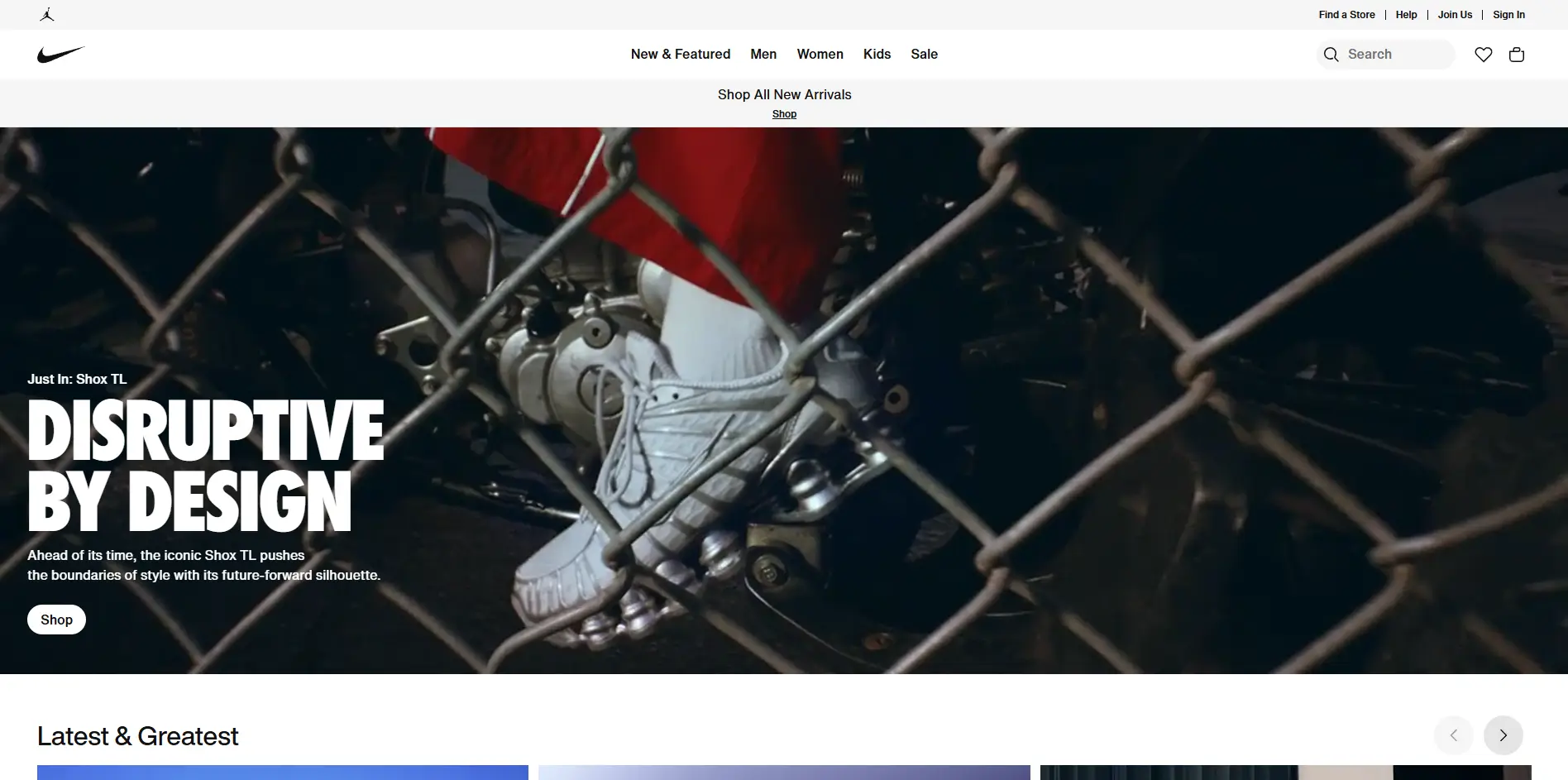
- Personalized Follow-Up Emails and Push Notifications: After a purchase, Nike follows up with personalized emails and push notifications, which keep customers informed and engaged. Customers receive updates on their order status, including shipment details and delivery timelines, which builds trust by keeping them informed. Nike’s follow-ups extend beyond transactional updates, as they often include recommendations for related products, care tips, and inspirational content based on the customer’s purchase history. These targeted communications encourage customers to stay engaged with the brand, reinforcing Nike’s commitment to creating a seamless omnichannel experience.
- NikePlus Loyalty Program: Nike’s post-sales service is amplified by its NikePlus loyalty program, which offers exclusive rewards, personalized content, and early access to new products. By integrating this program across the app, website, and in-store experiences, Nike ensures that customers can engage with their rewards regardless of the platform they use. This loyalty program allows Nike to reward customers for their ongoing engagement, fostering a sense of community and loyalty. Omnichannel customer service examples like Nike’s show that offering a unified loyalty program encourages repeat purchases and provides a post-sales experience that keeps customers connected to the brand.
IKEA: Integrated Online, App, and In-Store Services for Returns, Exchanges, and Product Support
IKEA is widely recognized as one of the best omnichannel customer service examples, offering seamless post-sales support that empowers customers to handle returns, exchanges, and product assembly with ease. IKEA’s strategy centers on accessibility, ensuring that customers have the resources they need to resolve post-purchase issues across digital and physical channels.

- Flexible Returns and Exchanges: IKEA’s post-sales service includes an efficient and flexible return and exchange policy that can be managed online, through the app, or in-store. Customers can initiate returns through the app or website, receive digital instructions, and then complete the process in-store if preferred. This flexibility ensures that customers have multiple options for handling returns, catering to both those who prefer online management and those who want in-person assistance. IKEA’s approach exemplifies how effective omnichannel customer service examples prioritize customer convenience, making returns a smooth experience that encourages customer satisfaction.
- Step-by-Step Assembly Instructions and Troubleshooting: IKEA supports customers after the sale by providing comprehensive assembly instructions and troubleshooting tips through its app and website. Customers can access digital manuals, video tutorials, and interactive instructions that help them set up their furniture independently. If additional help is needed, IKEA’s customer service team is available to assist via phone, email, or in-store, ensuring that customers receive a consistent level of support regardless of the channel they choose. This approach demonstrates how successful omnichannel customer service examples create a full-service experience post-sale, empowering customers with resources that add value and minimize frustration.
Allbirds: Personalized Follow-Ups, Order Tracking, and Loyalty Incentives Through Multiple Channels
Allbirds, an eco-friendly footwear brand that operates on Shopify, provides an outstanding example of post-sales omnichannel customer service. Known for its commitment to sustainability and customer satisfaction, Allbirds utilizes personalized communications, comprehensive tracking, and loyalty incentives to engage customers after their purchase, ensuring a seamless experience across email, SMS, and mobile app channels.
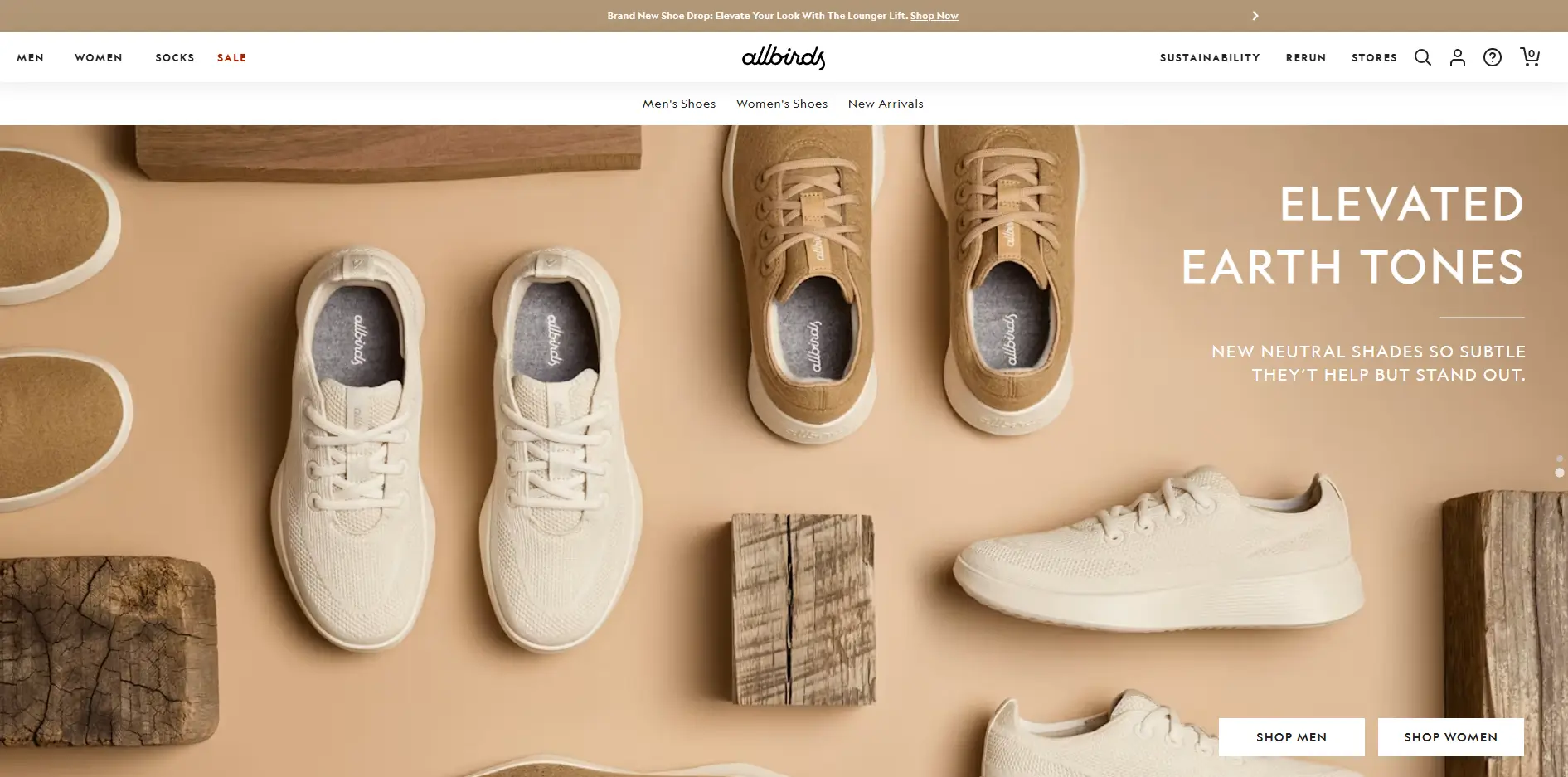
- Automated Follow-Up Emails for Order Tracking and Delivery Updates: After a customer makes a purchase, Allbirds sends a series of automated emails that keep the customer informed of their order’s progress, from confirmation to shipment and delivery. These emails not only provide essential order details but also reinforce Allbirds’ transparency and reliability. The post-delivery emails include personalized messages, often thanking the customer and inviting them to share feedback. Omnichannel customer service examples like Allbirds show that providing detailed order tracking helps reassure customers and makes the post-purchase experience smooth and satisfying.
- Product Care Tips and Personalized Recommendations: Allbirds continues to engage customers post-sale by sending follow-up emails with product care instructions and recommendations for related products based on their purchase history. This approach demonstrates that Allbirds cares about the longevity of its products and values the customer’s ongoing experience with them. Personalized follow-ups ensure that customers feel supported and informed, with tips on how to maintain their footwear’s quality. Omnichannel customer service examples from Allbirds illustrate how thoughtful post-sales communications can add value and keep customers engaged with the brand.
- Loyalty Rewards and App Notifications for Ongoing Engagement: Allbirds keeps customers engaged through its loyalty program, which offers exclusive discounts, early access to new product releases, and personalized notifications. Through the app, customers can track their rewards and receive push notifications that remind them of their loyalty benefits, encouraging repeat purchases. By providing these loyalty incentives through a unified platform, Allbirds demonstrates that omnichannel customer service examples like theirs can drive reengagement and loyalty through well-integrated, rewarding post-sales strategies.
Key Takeaways from Post-Sales Omnichannel Customer Service Examples
Nike, IKEA, and Allbirds showcase different but equally effective post-sales omnichannel strategies, each focusing on providing value, support, and engagement after the transaction is complete. Here are some key takeaways from these omnichannel customer service examples:
- Consistent, Personalized Communications Keep Customers Engaged: By sending personalized emails and push notifications, Nike and Allbirds show that tailored communications can enhance the post-sales experience, keeping customers informed and valued. These communications can include order updates, product care tips, and loyalty rewards, all of which reinforce the brand’s commitment to customer satisfaction.
- Flexible, Omnichannel Support Options Build Customer Trust: IKEA’s approach to post-sales support, including flexible return policies and accessible product instructions, demonstrates that giving customers multiple options for resolving issues fosters trust and satisfaction. By allowing customers to choose the channel that suits them best—whether online, in-store, or through the app—IKEA reduces friction and builds a more reliable brand image.
- Loyalty Programs Integrated Across Channels Drive Repeat Business: NikePlus and Allbirds’ loyalty incentives show that rewards programs integrated across channels encourage reengagement and foster long-term loyalty. Customers appreciate the ability to earn and redeem rewards on the platform of their choice, making loyalty programs an effective tool for boosting repeat purchases and brand loyalty.
These omnichannel customer service examples from Nike, IKEA, and Allbirds illustrate that post-sales support is a valuable part of the customer journey. By providing consistent communication, flexible support, and rewarding loyalty, brands can enhance customer satisfaction, foster loyalty, and strengthen their relationships with customers well beyond the initial sale.
Key Technologies for Omnichannel Customer Service
In today’s competitive landscape, delivering a seamless omnichannel customer service experience requires more than just a multi-channel presence—it demands an integrated approach where data, support, and communication converge into a cohesive customer journey. Key technologies play an essential role in achieving this goal, allowing businesses to collect, analyze, and respond to customer needs effectively. Numerous omnichannel customer service examples demonstrate how technology can create unified customer experiences across platforms, leading to greater satisfaction and loyalty. This section explores the primary technologies that power top-notch omnichannel customer service: CRM and data integration tools, AI and chatbots, analytics platforms, and social media management tools.
CRM and Data Integration Tools
Customer relationship management (CRM) and data integration tools are foundational technologies for creating an effective omnichannel customer service environment. These tools centralize customer data from various touchpoints, enabling brands to track customer interactions, preferences, and behaviors. By using CRM systems, companies can provide more personalized service and maintain continuity across channels, as seen in many successful omnichannel customer service examples.

- Using CRM Systems to Unify Data Across Platforms: A robust CRM system unifies customer data across different channels, such as in-store purchases, website visits, mobile app interactions, and social media engagements. This unified data view allows customer service agents to access a complete profile of each customer, ensuring they understand the context of each interaction. Omnichannel customer service examples from companies like Salesforce and HubSpot demonstrate that effective CRMs eliminate silos and create a centralized database, so customers receive consistent service no matter how they choose to interact with the brand. A unified CRM helps brands offer a smooth, uninterrupted experience by minimizing the need for customers to repeat information.
- Enhancing Customer Profiles and Personalized Service: Integrated CRM systems enable brands to develop comprehensive customer profiles, enhancing the ability to offer personalized support. These profiles include customer purchase histories, product preferences, interaction patterns, and past service inquiries. Many omnichannel customer service examples illustrate that by drawing on these detailed profiles, brands can personalize their recommendations, offers, and support interactions. For instance, an agent can suggest products based on the customer’s previous purchases or resolve issues quickly by referring to past conversations. By fostering a more personalized approach, CRMs help brands build stronger relationships with their customers and increase loyalty.
AI and Chatbots in Omnichannel Service
AI and chatbots are transforming omnichannel customer service by enabling brands to handle inquiries at scale and provide personalized assistance instantly. These AI-driven tools reduce the burden on human agents by managing repetitive tasks and ensuring customers have 24/7 access to support.
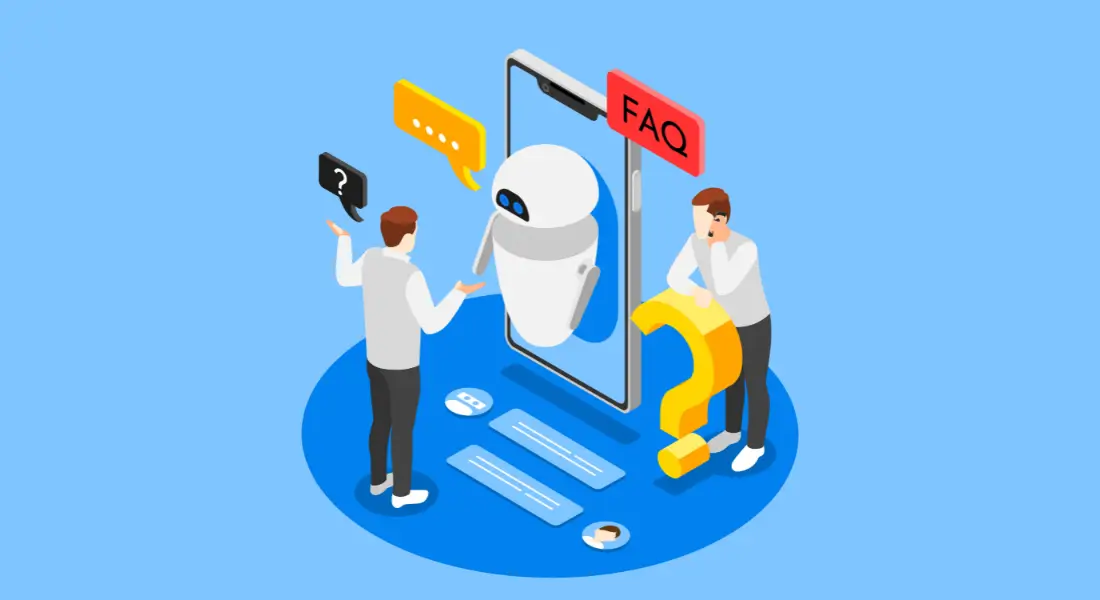
- The Rise of AI-Powered Tools to Manage Customer Inquiries: AI-powered chatbots can handle a wide range of inquiries, from answering common questions to guiding customers through purchase decisions. These chatbots are programmed to recognize intent, allowing them to provide relevant responses based on keywords or questions. Omnichannel customer service examples show that brands implementing AI tools like chatbots and virtual assistants improve response times, reduce wait times, and ensure customers have support anytime they need it. AI can also escalate more complex queries to human agents, creating a blended support approach that combines the efficiency of automation with the expertise of human assistance.
- Personalized Chatbots That Adapt to Customer Preferences: Advanced chatbots go beyond basic inquiries by personalizing interactions based on customer profiles, preferences, and past behaviors. These bots can remember user preferences, suggest products, and even provide tailored responses based on the individual customer’s needs. For example, if a customer frequently buys a particular type of product, the chatbot can recommend similar items or exclusive discounts. Omnichannel customer service examples show that personalized chatbots enhance the customer experience by making interactions feel unique and relevant, increasing the likelihood of conversion and engagement.
Analytics Tools for Omnichannel Service
Analytics platforms are crucial for tracking customer interactions and gathering insights that help brands optimize their omnichannel strategies. These tools provide data on customer behavior, service performance, and engagement across channels, helping brands make informed decisions to improve service quality and customer satisfaction.

- Tracking Customer Interactions Across Channels: Analytics tools allow brands to monitor customer journeys across different touchpoints, including websites, mobile apps, social media, and in-store interactions. Many omnichannel customer service examples illustrate that by tracking interactions, brands can understand how customers move between channels, identify common pain points, and make adjustments to ensure a seamless experience. For instance, analytics can reveal if customers frequently abandon their carts on mobile devices, allowing the brand to investigate and address potential issues with the mobile checkout process.
- Monitoring Customer Service Performance and Feedback: Analytics platforms like Zendesk and Salesforce enable brands to track customer service metrics such as response times, resolution rates, and customer satisfaction scores. Omnichannel customer service examples show that these insights help brands pinpoint areas of improvement, optimize resource allocation, and ensure consistent service quality. By gathering feedback through surveys and reviews, analytics tools also provide valuable insights into customer sentiment, enabling brands to enhance their support strategies to better meet customer expectations.
Social Media and Customer Interaction Tools
Social media is a critical component of omnichannel customer service, as it offers real-time engagement with customers on platforms where they are most active. Social media management tools help brands monitor interactions, respond quickly to inquiries, and maintain a cohesive brand presence across various platforms.
- Using Social Media Management Tools to Monitor and Engage with Customers: Tools like Hootsuite and Sprinklr help brands keep track of mentions, direct messages, and comments across multiple social media channels, allowing customer service teams to respond quickly. Omnichannel customer service examples highlight that by using social media management tools, brands can streamline their social interactions, ensuring they don’t miss important inquiries or customer feedback. These tools also offer features like scheduling and content curation, which support consistent engagement and help brands stay responsive to their audience.
- The Importance of Quick Responses to Social Inquiries: Customers expect prompt responses on social media, often within minutes or hours. Social media management tools enable brands to meet these expectations by providing real-time notifications and response tracking. Many omnichannel customer service examples reveal that brands with fast response times on social media improve customer satisfaction and build a positive reputation for their support. Quick responses also prevent issues from escalating, as customers appreciate when their concerns are acknowledged and addressed promptly on a public platform.
Measuring the Success of Omnichannel Customer Service
To evaluate the effectiveness of an omnichannel customer service strategy, it is crucial to measure various aspects of customer interaction and satisfaction across all channels. By focusing on specific metrics, businesses can gain insight into how well they are meeting customer expectations, identify areas for improvement, and ensure a cohesive experience across the entire customer journey
Customer Satisfaction Metrics
Each metric offers unique insights into customer sentiment, loyalty, and interaction quality, helping brands to fine-tune their omnichannel service approach and prioritize changes that enhance the customer experience.
Customer Satisfaction (CSAT): Measuring Customer Happiness Across Touchpoints
Customer Satisfaction (CSAT) is a widely used metric that measures customers’ happiness with specific interactions or overall experiences. CSAT surveys typically ask customers to rate their satisfaction on a scale, such as 1 to 5 or 1 to 10, with higher scores indicating greater satisfaction. This metric provides valuable feedback on individual touchpoints, such as website chats, in-store assistance, or app interactions, giving brands a clear picture of where they are meeting or falling short of customer expectations.
- Tracking Satisfaction Across Multiple Channels: Omnichannel customer service examples demonstrate that brands measuring CSAT across all touchpoints can identify strengths and weaknesses in their service delivery. For instance, a brand may receive high CSAT scores for in-store support but lower scores for online chat interactions. By examining these discrepancies, companies can allocate resources to improve weaker areas, ensuring that the customer experience is consistent across all channels. Tracking CSAT also allows brands to monitor trends over time, highlighting improvements or declines in customer satisfaction across specific touchpoints.
- Using CSAT to Inform Service Enhancements: CSAT scores provide actionable feedback that brands can use to make targeted improvements to their service strategy. For example, if customers consistently report dissatisfaction with response times on social media, the brand might consider expanding its social media support team or implementing chatbots to manage high volumes. By analyzing CSAT data, brands can prioritize changes that have the most significant impact on customer satisfaction, leading to a more cohesive and positive omnichannel experience.
Net Promoter Score (NPS): Gauging Customer Loyalty and Likelihood to Recommend
Net Promoter Score (NPS) measures customer loyalty by asking a single question: “How likely are you to recommend our company/product/service to a friend or colleague?” Customers respond on a scale from 0 to 10, and their scores are classified into three categories: promoters (9–10), passives (7–8), and detractors (0–6). NPS provides insights into customer loyalty and the likelihood of customers becoming brand advocates, which is especially valuable in an omnichannel setting where customer loyalty is built across multiple touchpoints.
- Evaluating Omnichannel Loyalty Through NPS: By measuring NPS across different channels, brands can identify which aspects of their service drive loyalty and which may contribute to customer frustration. Omnichannel customer service examples from leading brands show that tracking NPS by channel—such as email, phone, in-store, and app support—helps businesses understand where they excel in customer engagement and where they may need to improve. For instance, a brand may find high NPS scores from in-store shoppers but lower scores from online support interactions, indicating a need to enhance the digital support experience.
- Turning Detractors into Promoters Through Targeted Actions: NPS also helps brands identify detractors, or customers who are less likely to recommend the brand. Omnichannel customer service examples show that companies proactively addressing the needs of detractors can reduce churn and increase loyalty. By following up with detractors, brands can understand their concerns, take corrective actions, and demonstrate that they value customer feedback. This proactive approach often leads to improved customer sentiment, potentially turning detractors into promoters and strengthening brand loyalty across channels.
Customer Effort Score (CES): Evaluating Ease of Service Interaction
Customer Effort Score (CES) measures how easy it is for customers to interact with the brand, especially when resolving issues or completing transactions. CES surveys typically ask customers to agree or disagree with statements like, “The company made it easy for me to resolve my issue.” Lower effort scores indicate that customers had a smoother experience, while higher scores suggest that customers encountered obstacles. Omnichannel customer service examples highlight the importance of minimizing customer effort to improve overall satisfaction and retention.
- Identifying Friction Points in the Omnichannel Journey: CES is particularly valuable in identifying pain points within an omnichannel journey, as it reveals which touchpoints may require more customer effort. For example, if customers consistently report high effort scores for returning items purchased online but low effort scores for in-store purchases, the brand can focus on improving the online returns process. Omnichannel customer service examples show that brands optimizing CES across all channels provide a seamless, user-friendly experience, ultimately boosting satisfaction and reducing churn.
- Reducing Customer Effort with Streamlined Solutions: Lowering customer effort across channels involves streamlining processes, offering self-service options, and ensuring that customer support is readily accessible. Omnichannel customer service examples from successful brands demonstrate that reducing customer effort can lead to higher retention rates and customer satisfaction. For instance, implementing a chatbot to handle common inquiries on the website or app can help resolve issues faster, while simplifying the mobile checkout process can make shopping on mobile devices easier. By proactively addressing areas with high CES scores, brands can provide a smoother, more enjoyable customer experience.
Measuring Customer Satisfaction (CSAT), Net Promoter Score (NPS), and Customer Effort Score (CES) is essential for evaluating the success of an omnichannel customer service strategy. These metrics allow brands to gain valuable insights into customer happiness, loyalty, and ease of interaction across channels. Omnichannel customer service examples from industry leaders show that by focusing on these metrics, businesses can refine their strategies to ensure a cohesive, positive experience for customers at every touchpoint, ultimately building stronger relationships and increasing loyalty.
Optimizing Omnichannel Performance
Optimizing omnichannel performance goes beyond simply responding to customer inquiries; it involves proactive analysis and continuous improvement to deliver a consistent and satisfying experience across all channels.
Analyzing Data Across Channels
To understand the effectiveness of an omnichannel strategy, brands must analyze data from every channel where customers interact. This includes online and offline touchpoints such as websites, mobile apps, social media, email, phone support, and in-store interactions. Omnichannel customer service examples from successful brands illustrate how comprehensive data analysis across channels provides a clear view of customer behavior, preferences, and potential pain points.

- Tracking Customer Behavior and Interaction Patterns: Analyzing how customers move across different channels offers insights into their journey and highlights any obstacles they might encounter. For example, if customers frequently start a purchase online but complete it in-store, brands can adjust their online experience to better support purchase completion. Omnichannel customer service examples show that data analysis tools—like customer journey mapping, CRM platforms, and analytics software—are essential for gaining a unified view of customer behavior. This unified view helps brands identify which touchpoints work well and which require adjustments to support a seamless experience.
- Using Data to Personalize and Improve Experiences: Personalization plays a crucial role in a successful omnichannel strategy, and data analysis allows brands to tailor their interactions to each customer’s preferences. For instance, data from past purchases, browsing history, and engagement on social media can be used to create personalized offers or recommendations. Omnichannel customer service examples show that brands utilizing data for personalization see higher satisfaction and conversion rates, as customers feel understood and valued across channels. By analyzing data, companies can continually refine their approach to offer more relevant and satisfying experiences at each interaction.
Feedback Loops and Continuous Improvement
Customer feedback is invaluable for understanding the strengths and weaknesses of an omnichannel customer service strategy. Successful omnichannel customer service examples demonstrate that brands implementing feedback loops are better equipped to make continuous improvements, keeping pace with changing customer expectations and ensuring service quality across channels.
- Creating Feedback Loops for Real-Time Insight: Feedback loops are essential for capturing real-time insights into the customer experience, often through surveys, reviews, and direct feedback from support interactions. Brands that establish consistent feedback collection across all channels can gauge customer satisfaction and detect any recurring issues. For example, a retailer might send post-purchase surveys to customers who shopped online, in-store, or through the app to understand their experience across different platforms. Omnichannel customer service examples from top brands show that collecting feedback from each channel allows for quick identification of problems, enabling brands to make immediate adjustments that enhance the customer experience.
- Using Feedback to Inform Continuous Improvement: Rather than simply gathering feedback, successful brands actively use it to inform decisions and drive continuous improvement. Omnichannel customer service examples illustrate that by acting on customer insights—such as improving response times on social media or refining the mobile app interface—brands can make targeted changes that directly enhance the customer journey. Regularly reviewing feedback and assessing service performance allows businesses to keep up with evolving customer needs and strengthen every touchpoint, resulting in an optimized omnichannel strategy that maintains a high standard of customer satisfaction.
Cross-Department Collaboration
True omnichannel excellence requires collaboration across departments, as each team plays a role in shaping the customer journey. From marketing and sales to customer service and IT, cross-departmental collaboration ensures that every aspect of the customer experience is aligned with the brand’s standards and values. Omnichannel customer service examples from industry leaders reveal that by working together, departments can deliver a cohesive, consistent experience that supports customer engagement and loyalty.

- Aligning Goals and Metrics Across Departments: When departments operate with shared goals and KPIs, they can work together more effectively to deliver a unified customer experience. For example, if both marketing and customer service are aligned on customer satisfaction goals, they can collaborate to ensure promotional campaigns are supported by ready-to-assist customer service teams.
- Streamlining Communication and Information Sharing: Cross-departmental collaboration requires effective communication and information sharing, particularly when it comes to customer data and insights. When all teams have access to a centralized CRM or analytics platform, they can quickly understand a customer’s journey and any issues they might have encountered. For instance, if a customer has voiced concerns to the support team, this information can be shared with marketing to tailor future communications or promotions for that customer. Successful omnichannel customer service examples illustrate that streamlined communication across teams enables faster resolution of issues, more consistent interactions, and a unified customer experience across all touchpoints.
Optimizing omnichannel performance involves continuous analysis, proactive feedback loops, and close collaboration between departments. By analyzing data from all channels, gathering and implementing feedback, and fostering interdepartmental collaboration, brands can continually refine their omnichannel strategy. Omnichannel customer service examples show that this approach not only enhances customer satisfaction but also strengthens loyalty, as customers recognize and appreciate the brand’s commitment to providing a consistent and enjoyable experience across every interaction.
Conclusion
The best omnichannel customer service examples illustrate that brands providing cohesive, cross-channel experiences can successfully meet and exceed customer expectations, creating a level of satisfaction and loyalty that drives long-term success. By ensuring customers have access to the same quality of support, information, and engagement whether they’re shopping in-store, browsing online, or interacting on social media, brands can set themselves apart in an increasingly competitive market.
The role of technology, personalization, and customer feedback is fundamental to delivering superior omnichannel customer service. Advanced CRM systems, AI-driven chatbots, and analytics tools enable brands to manage and analyze interactions effectively, giving them a 360-degree view of the customer journey. This integrated approach allows brands to personalize interactions, ensuring that each customer receives a service tailored to their needs and preferences. Moreover, establishing feedback loops and continuously analyzing performance data enables brands to identify improvement areas and adapt to evolving customer expectations. The most successful omnichannel customer service examples show that businesses actively listening to and acting on customer feedback can maintain relevance and build a reputation for exceptional service.




